Women education 18th century Stock Photos and Images
(396)See women education 18th century stock video clipsQuick filters:
Women education 18th century Stock Photos and Images
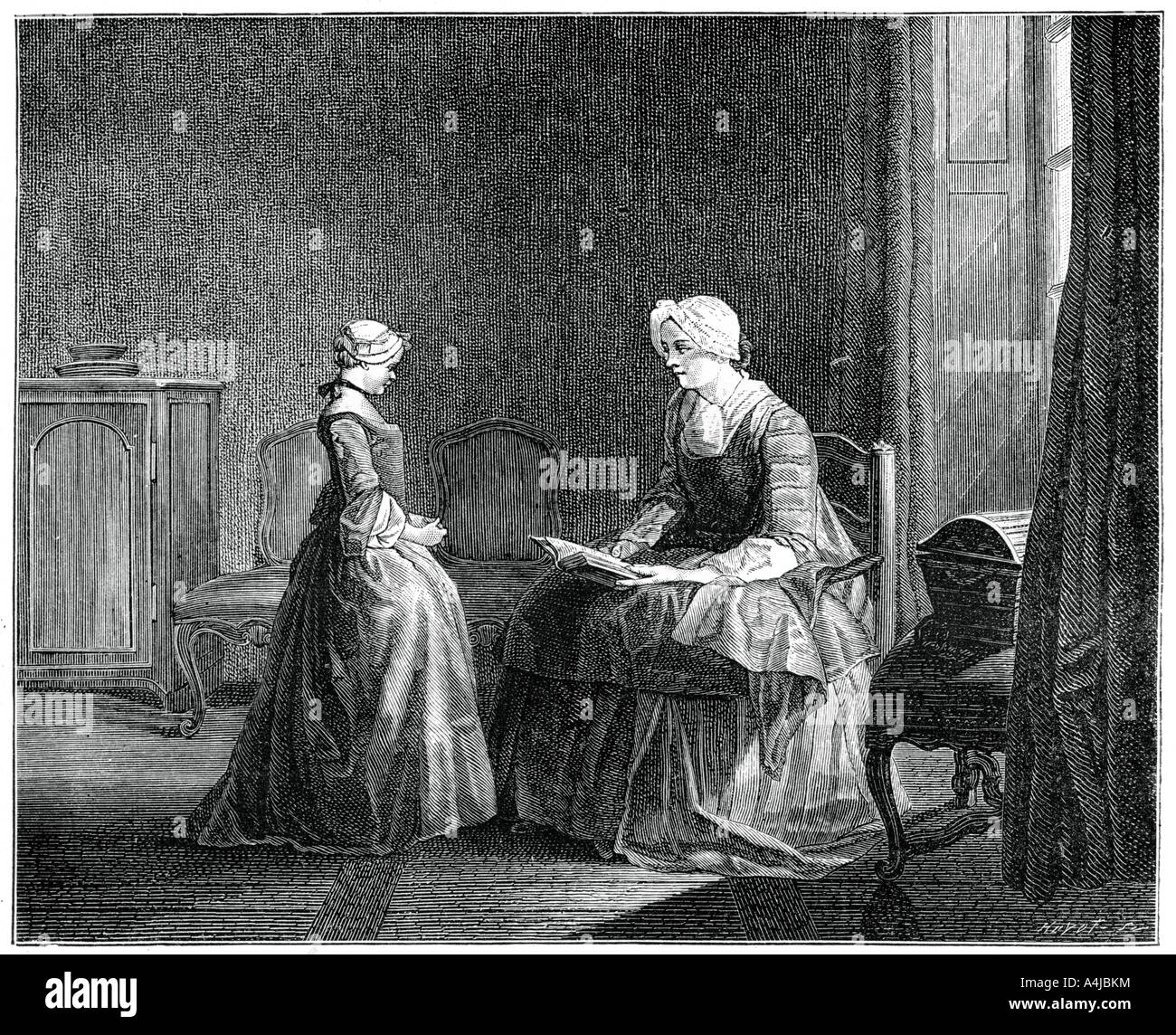 The Good Education, 1753, (1885).Artist: Jacques Philippe Le Bas Stock Photohttps://www.alamy.com/image-license-details/?v=1https://www.alamy.com/stock-photo-the-good-education-1753-1885artist-jacques-philippe-le-bas-11061463.html
The Good Education, 1753, (1885).Artist: Jacques Philippe Le Bas Stock Photohttps://www.alamy.com/image-license-details/?v=1https://www.alamy.com/stock-photo-the-good-education-1753-1885artist-jacques-philippe-le-bas-11061463.htmlRMA4JBKM–The Good Education, 1753, (1885).Artist: Jacques Philippe Le Bas
 18th century aristocratic women receiving private lesson from a tutor. After a work by Rossi. Stock Photohttps://www.alamy.com/image-license-details/?v=1https://www.alamy.com/stock-photo-18th-century-aristocratic-women-receiving-private-lesson-from-a-tutor-36332572.html
18th century aristocratic women receiving private lesson from a tutor. After a work by Rossi. Stock Photohttps://www.alamy.com/image-license-details/?v=1https://www.alamy.com/stock-photo-18th-century-aristocratic-women-receiving-private-lesson-from-a-tutor-36332572.htmlRMC332FT–18th century aristocratic women receiving private lesson from a tutor. After a work by Rossi.
 Street education, teaching good manners to the people, vintage engraving 18th century Stock Photohttps://www.alamy.com/image-license-details/?v=1https://www.alamy.com/stock-photo-street-education-teaching-good-manners-to-the-people-vintage-engraving-126960461.html
Street education, teaching good manners to the people, vintage engraving 18th century Stock Photohttps://www.alamy.com/image-license-details/?v=1https://www.alamy.com/stock-photo-street-education-teaching-good-manners-to-the-people-vintage-engraving-126960461.htmlRFHAFFA5–Street education, teaching good manners to the people, vintage engraving 18th century
 Vietnam: Women in ao dai ('long dress') in a Vietnamese painting. The ao dai (Vietnamese: áo dài) is a Vietnamese national costume, now most commonly for women. In its current form, it is a tight-fitting silk tunic worn over pantaloons. The word is pronounced ow-zye in the north and ow-yai in the south, and translates as 'long dress'. The name áo dài was originally applied to the dress worn at the court of the Nguyễn Lords at Huế in the 18th century. This outfit evolved into the áo ngũ thân, a five-paneled aristocratic gown worn in the 19th and early 20th centuries. Stock Photohttps://www.alamy.com/image-license-details/?v=1https://www.alamy.com/vietnam-women-in-ao-dai-long-dress-in-a-vietnamese-painting-the-ao-dai-vietnamese-o-di-is-a-vietnamese-national-costume-now-most-commonly-for-women-in-its-current-form-it-is-a-tight-fitting-silk-tunic-worn-over-pantaloons-the-word-is-pronounced-ow-zye-in-the-north-and-ow-yai-in-the-south-and-translates-as-long-dress-the-name-o-di-was-originally-applied-to-the-dress-worn-at-the-court-of-the-nguyn-lords-at-hu-in-the-18th-century-this-outfit-evolved-into-the-o-ng-thn-a-five-paneled-aristocratic-gown-worn-in-the-19th-and-early-20th-centuries-image344240678.html
Vietnam: Women in ao dai ('long dress') in a Vietnamese painting. The ao dai (Vietnamese: áo dài) is a Vietnamese national costume, now most commonly for women. In its current form, it is a tight-fitting silk tunic worn over pantaloons. The word is pronounced ow-zye in the north and ow-yai in the south, and translates as 'long dress'. The name áo dài was originally applied to the dress worn at the court of the Nguyễn Lords at Huế in the 18th century. This outfit evolved into the áo ngũ thân, a five-paneled aristocratic gown worn in the 19th and early 20th centuries. Stock Photohttps://www.alamy.com/image-license-details/?v=1https://www.alamy.com/vietnam-women-in-ao-dai-long-dress-in-a-vietnamese-painting-the-ao-dai-vietnamese-o-di-is-a-vietnamese-national-costume-now-most-commonly-for-women-in-its-current-form-it-is-a-tight-fitting-silk-tunic-worn-over-pantaloons-the-word-is-pronounced-ow-zye-in-the-north-and-ow-yai-in-the-south-and-translates-as-long-dress-the-name-o-di-was-originally-applied-to-the-dress-worn-at-the-court-of-the-nguyn-lords-at-hu-in-the-18th-century-this-outfit-evolved-into-the-o-ng-thn-a-five-paneled-aristocratic-gown-worn-in-the-19th-and-early-20th-centuries-image344240678.htmlRM2B01EDX–Vietnam: Women in ao dai ('long dress') in a Vietnamese painting. The ao dai (Vietnamese: áo dài) is a Vietnamese national costume, now most commonly for women. In its current form, it is a tight-fitting silk tunic worn over pantaloons. The word is pronounced ow-zye in the north and ow-yai in the south, and translates as 'long dress'. The name áo dài was originally applied to the dress worn at the court of the Nguyễn Lords at Huế in the 18th century. This outfit evolved into the áo ngũ thân, a five-paneled aristocratic gown worn in the 19th and early 20th centuries.
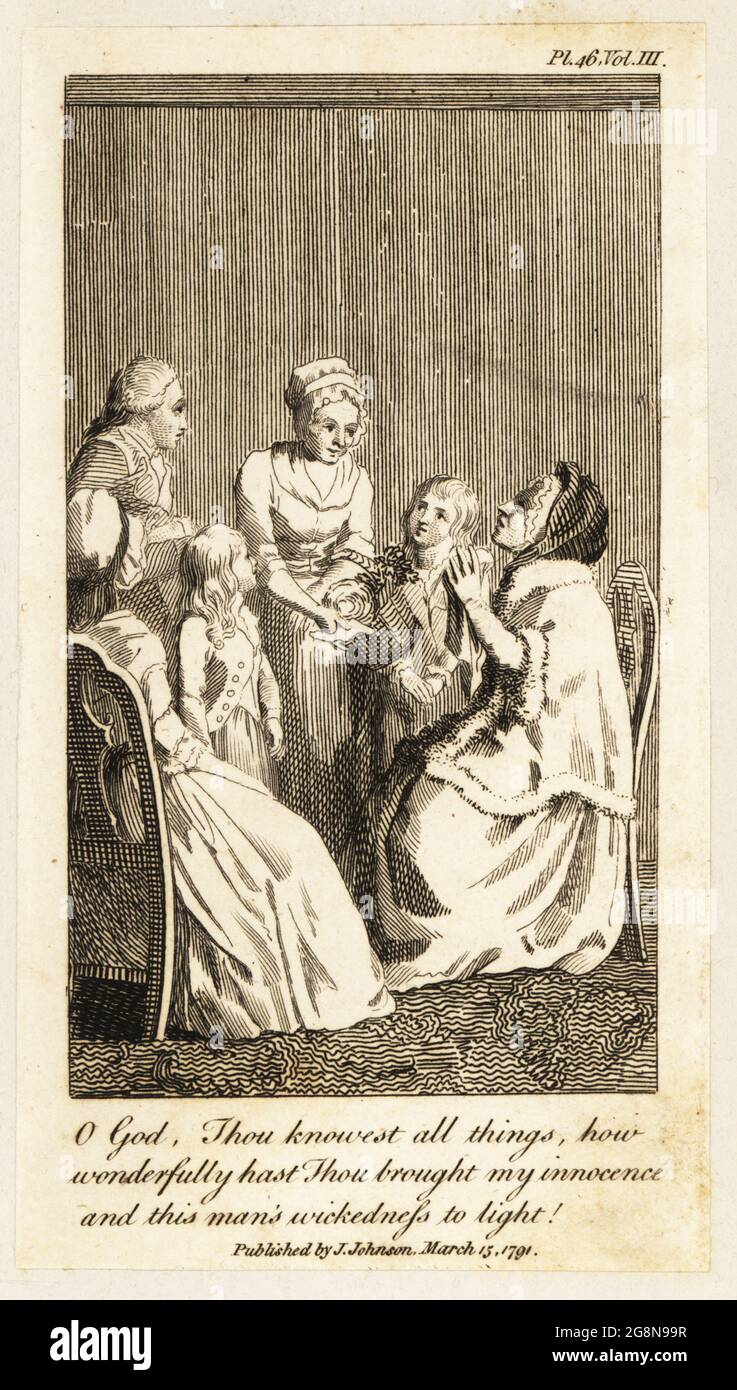 Women and children seated in a parlor, 18th century. A maid shows Mrs. Sandford the note of debt stolen by the miser Mr. Skinpenny. O God, thou knowest all things, how wonderfully hast Thou brought my innocence and this man's wickedness to light! Copperplate engraving by William Blake after an illustration by Daniel Nikolaus Chodowiecki from Mary Wollstonecraft's translation of Christian Gotthilf Salzmann's Elements of Morality, London, 1791. Stock Photohttps://www.alamy.com/image-license-details/?v=1https://www.alamy.com/women-and-children-seated-in-a-parlor-18th-century-a-maid-shows-mrs-sandford-the-note-of-debt-stolen-by-the-miser-mr-skinpenny-o-god-thou-knowest-all-things-how-wonderfully-hast-thou-brought-my-innocence-and-this-mans-wickedness-to-light!-copperplate-engraving-by-william-blake-after-an-illustration-by-daniel-nikolaus-chodowiecki-from-mary-wollstonecrafts-translation-of-christian-gotthilf-salzmanns-elements-of-morality-london-1791-image435644771.html
Women and children seated in a parlor, 18th century. A maid shows Mrs. Sandford the note of debt stolen by the miser Mr. Skinpenny. O God, thou knowest all things, how wonderfully hast Thou brought my innocence and this man's wickedness to light! Copperplate engraving by William Blake after an illustration by Daniel Nikolaus Chodowiecki from Mary Wollstonecraft's translation of Christian Gotthilf Salzmann's Elements of Morality, London, 1791. Stock Photohttps://www.alamy.com/image-license-details/?v=1https://www.alamy.com/women-and-children-seated-in-a-parlor-18th-century-a-maid-shows-mrs-sandford-the-note-of-debt-stolen-by-the-miser-mr-skinpenny-o-god-thou-knowest-all-things-how-wonderfully-hast-thou-brought-my-innocence-and-this-mans-wickedness-to-light!-copperplate-engraving-by-william-blake-after-an-illustration-by-daniel-nikolaus-chodowiecki-from-mary-wollstonecrafts-translation-of-christian-gotthilf-salzmanns-elements-of-morality-london-1791-image435644771.htmlRM2G8N99R–Women and children seated in a parlor, 18th century. A maid shows Mrs. Sandford the note of debt stolen by the miser Mr. Skinpenny. O God, thou knowest all things, how wonderfully hast Thou brought my innocence and this man's wickedness to light! Copperplate engraving by William Blake after an illustration by Daniel Nikolaus Chodowiecki from Mary Wollstonecraft's translation of Christian Gotthilf Salzmann's Elements of Morality, London, 1791.
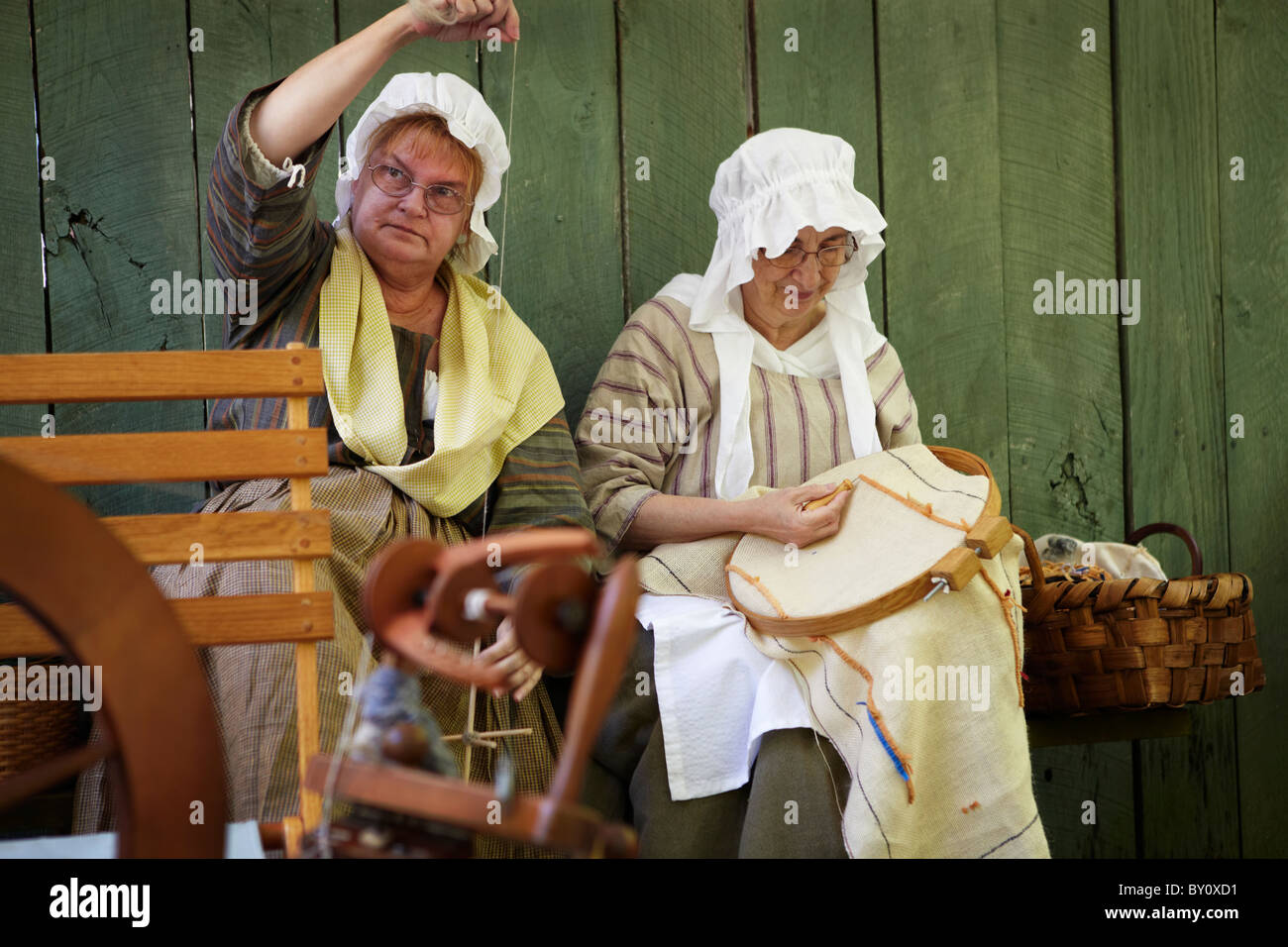 Two women sew at the Claude Moore Colonial Farm market fair, McLean, Virginia, where it is always 1771. Stock Photohttps://www.alamy.com/image-license-details/?v=1https://www.alamy.com/stock-photo-two-women-sew-at-the-claude-moore-colonial-farm-market-fair-mclean-33826829.html
Two women sew at the Claude Moore Colonial Farm market fair, McLean, Virginia, where it is always 1771. Stock Photohttps://www.alamy.com/image-license-details/?v=1https://www.alamy.com/stock-photo-two-women-sew-at-the-claude-moore-colonial-farm-market-fair-mclean-33826829.htmlRMBY0XD1–Two women sew at the Claude Moore Colonial Farm market fair, McLean, Virginia, where it is always 1771.
 Marcello Bacciarelli (1731-1818). Italian painter. Granting to Privileges of the Academy of Krakow, 1796. Oil on canvas. 19th Century Polish Art Gallery (Sukiennice Museum). National Museum of Krakow. Poland. Stock Photohttps://www.alamy.com/image-license-details/?v=1https://www.alamy.com/marcello-bacciarelli-1731-1818-italian-painter-granting-to-privileges-of-the-academy-of-krakow-1796-oil-on-canvas-19th-century-polish-art-gallery-sukiennice-museum-national-museum-of-krakow-poland-image332049004.html
Marcello Bacciarelli (1731-1818). Italian painter. Granting to Privileges of the Academy of Krakow, 1796. Oil on canvas. 19th Century Polish Art Gallery (Sukiennice Museum). National Museum of Krakow. Poland. Stock Photohttps://www.alamy.com/image-license-details/?v=1https://www.alamy.com/marcello-bacciarelli-1731-1818-italian-painter-granting-to-privileges-of-the-academy-of-krakow-1796-oil-on-canvas-19th-century-polish-art-gallery-sukiennice-museum-national-museum-of-krakow-poland-image332049004.htmlRM2A863W0–Marcello Bacciarelli (1731-1818). Italian painter. Granting to Privileges of the Academy of Krakow, 1796. Oil on canvas. 19th Century Polish Art Gallery (Sukiennice Museum). National Museum of Krakow. Poland.
 Abbess of Coldingham StAebbe the younger semi-mythological Abbess 870AD. Artist: Grignion Stock Photohttps://www.alamy.com/image-license-details/?v=1https://www.alamy.com/abbess-of-coldingham-staebbe-the-younger-semi-mythological-abbess-870ad-artist-grignion-image262777787.html
Abbess of Coldingham StAebbe the younger semi-mythological Abbess 870AD. Artist: Grignion Stock Photohttps://www.alamy.com/image-license-details/?v=1https://www.alamy.com/abbess-of-coldingham-staebbe-the-younger-semi-mythological-abbess-870ad-artist-grignion-image262777787.htmlRMW7EFMY–Abbess of Coldingham StAebbe the younger semi-mythological Abbess 870AD. Artist: Grignion
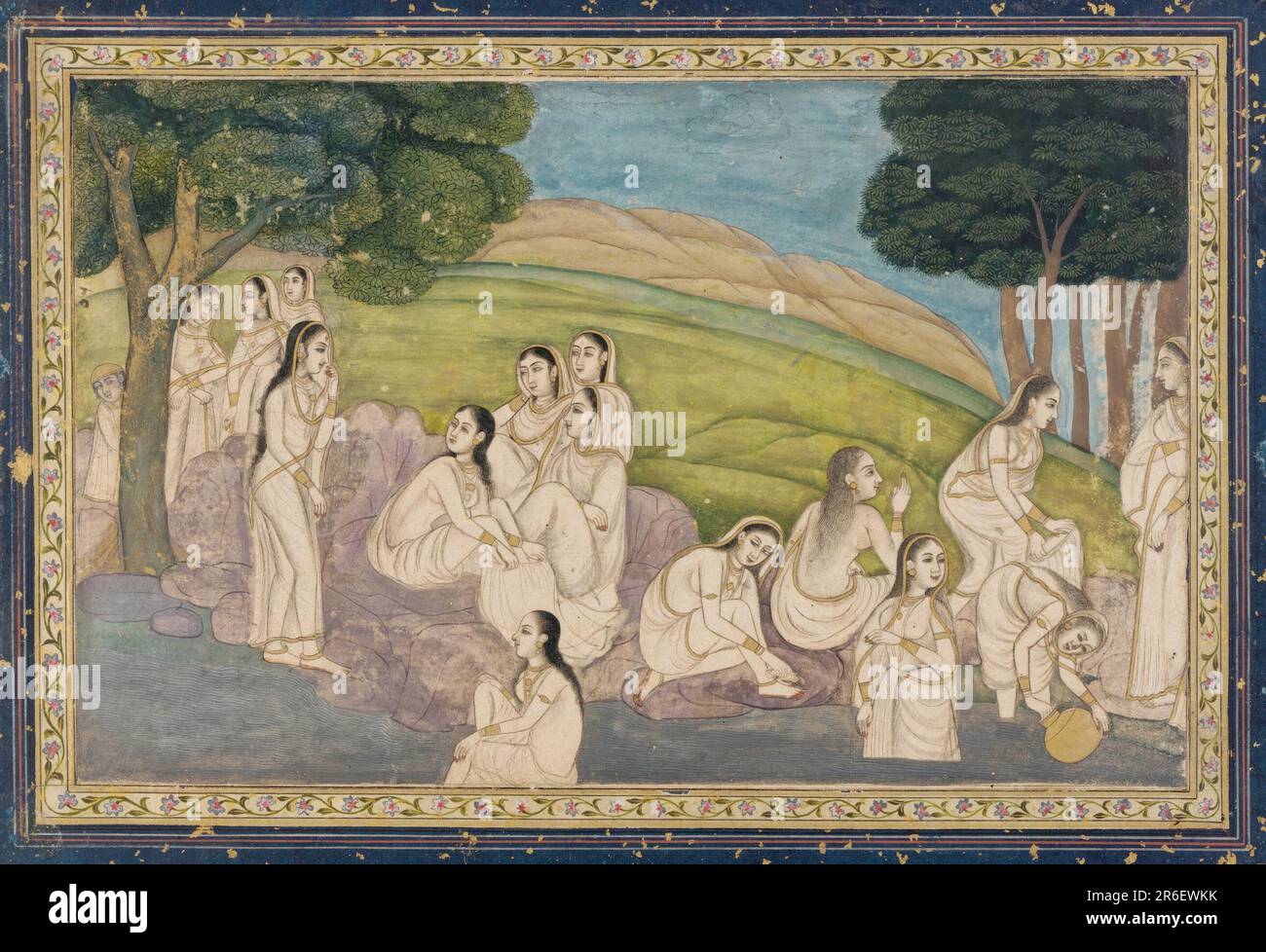 A group of women, bathing. Date: 18th century. Origin: India. Period: Mughal dynasty. Color and gold on paper. Museum: Freer Gallery of Art and Arthur M. Sackler Gallery. Stock Photohttps://www.alamy.com/image-license-details/?v=1https://www.alamy.com/a-group-of-women-bathing-date-18th-century-origin-india-period-mughal-dynasty-color-and-gold-on-paper-museum-freer-gallery-of-art-and-arthur-m-sackler-gallery-image554747191.html
A group of women, bathing. Date: 18th century. Origin: India. Period: Mughal dynasty. Color and gold on paper. Museum: Freer Gallery of Art and Arthur M. Sackler Gallery. Stock Photohttps://www.alamy.com/image-license-details/?v=1https://www.alamy.com/a-group-of-women-bathing-date-18th-century-origin-india-period-mughal-dynasty-color-and-gold-on-paper-museum-freer-gallery-of-art-and-arthur-m-sackler-gallery-image554747191.htmlRM2R6EWKK–A group of women, bathing. Date: 18th century. Origin: India. Period: Mughal dynasty. Color and gold on paper. Museum: Freer Gallery of Art and Arthur M. Sackler Gallery.
 Engraving depicting a sewing class at the Ladies Charity School, Powis Gardens, Notting Hill, London, founded in 1702. Stock Photohttps://www.alamy.com/image-license-details/?v=1https://www.alamy.com/engraving-depicting-a-sewing-class-at-the-ladies-charity-school-powis-gardens-notting-hill-london-founded-in-1702-image377040791.html
Engraving depicting a sewing class at the Ladies Charity School, Powis Gardens, Notting Hill, London, founded in 1702. Stock Photohttps://www.alamy.com/image-license-details/?v=1https://www.alamy.com/engraving-depicting-a-sewing-class-at-the-ladies-charity-school-powis-gardens-notting-hill-london-founded-in-1702-image377040791.htmlRM2CWBKAF–Engraving depicting a sewing class at the Ladies Charity School, Powis Gardens, Notting Hill, London, founded in 1702.
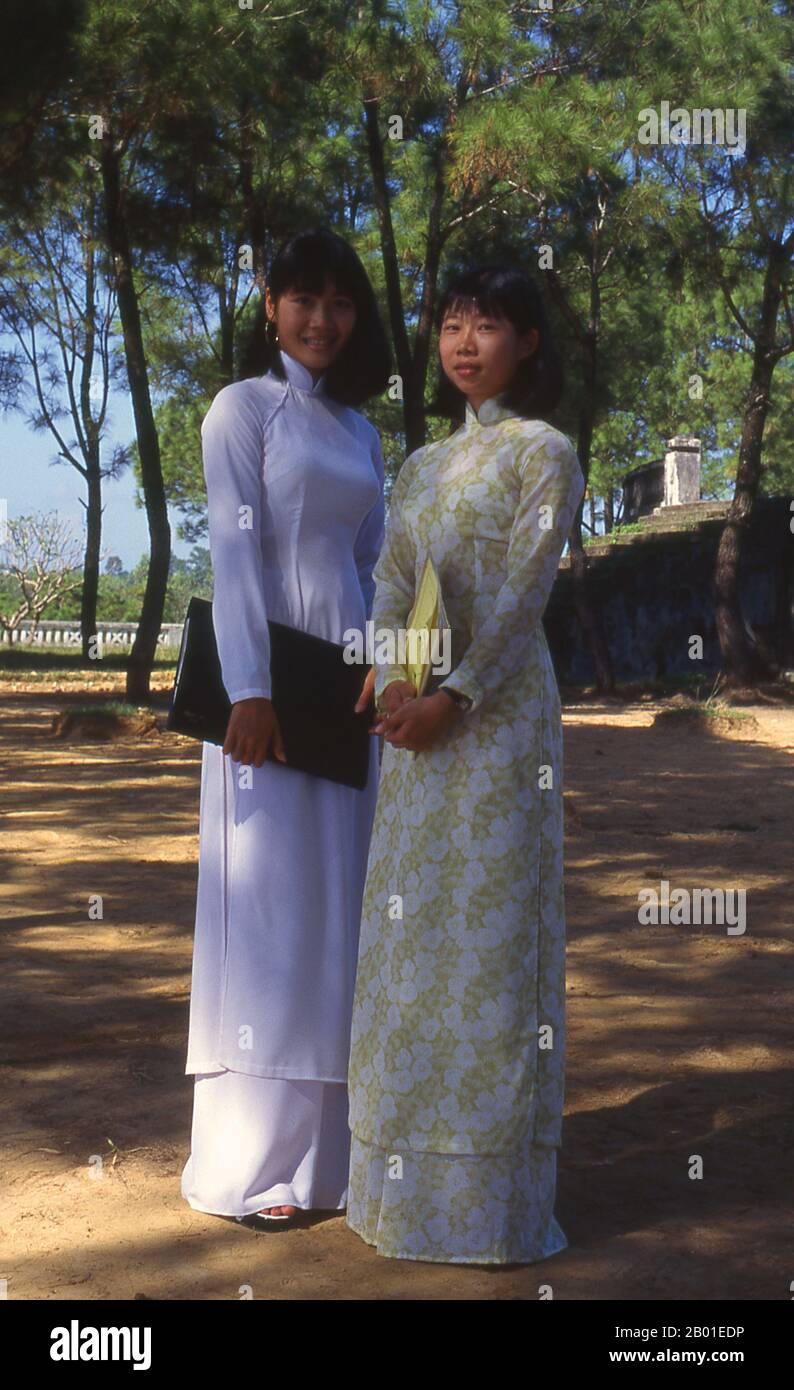 Vietnam: Two students in traditional Vietnamese ao dai ('long dress'). The ao dai (Vietnamese: áo dài) is a Vietnamese national costume, now most commonly for women. In its current form, it is a tight-fitting silk tunic worn over pantaloons. The word is pronounced ow-zye in the north and ow-yai in the south, and translates as 'long dress'. The name áo dài was originally applied to the dress worn at the court of the Nguyễn Lords at Huế in the 18th century. This outfit evolved into the áo ngũ thân, a five-paneled aristocratic gown worn in the 19th and early 20th centuries. Stock Photohttps://www.alamy.com/image-license-details/?v=1https://www.alamy.com/vietnam-two-students-in-traditional-vietnamese-ao-dai-long-dress-the-ao-dai-vietnamese-o-di-is-a-vietnamese-national-costume-now-most-commonly-for-women-in-its-current-form-it-is-a-tight-fitting-silk-tunic-worn-over-pantaloons-the-word-is-pronounced-ow-zye-in-the-north-and-ow-yai-in-the-south-and-translates-as-long-dress-the-name-o-di-was-originally-applied-to-the-dress-worn-at-the-court-of-the-nguyn-lords-at-hu-in-the-18th-century-this-outfit-evolved-into-the-o-ng-thn-a-five-paneled-aristocratic-gown-worn-in-the-19th-and-early-20th-centuries-image344240674.html
Vietnam: Two students in traditional Vietnamese ao dai ('long dress'). The ao dai (Vietnamese: áo dài) is a Vietnamese national costume, now most commonly for women. In its current form, it is a tight-fitting silk tunic worn over pantaloons. The word is pronounced ow-zye in the north and ow-yai in the south, and translates as 'long dress'. The name áo dài was originally applied to the dress worn at the court of the Nguyễn Lords at Huế in the 18th century. This outfit evolved into the áo ngũ thân, a five-paneled aristocratic gown worn in the 19th and early 20th centuries. Stock Photohttps://www.alamy.com/image-license-details/?v=1https://www.alamy.com/vietnam-two-students-in-traditional-vietnamese-ao-dai-long-dress-the-ao-dai-vietnamese-o-di-is-a-vietnamese-national-costume-now-most-commonly-for-women-in-its-current-form-it-is-a-tight-fitting-silk-tunic-worn-over-pantaloons-the-word-is-pronounced-ow-zye-in-the-north-and-ow-yai-in-the-south-and-translates-as-long-dress-the-name-o-di-was-originally-applied-to-the-dress-worn-at-the-court-of-the-nguyn-lords-at-hu-in-the-18th-century-this-outfit-evolved-into-the-o-ng-thn-a-five-paneled-aristocratic-gown-worn-in-the-19th-and-early-20th-centuries-image344240674.htmlRM2B01EDP–Vietnam: Two students in traditional Vietnamese ao dai ('long dress'). The ao dai (Vietnamese: áo dài) is a Vietnamese national costume, now most commonly for women. In its current form, it is a tight-fitting silk tunic worn over pantaloons. The word is pronounced ow-zye in the north and ow-yai in the south, and translates as 'long dress'. The name áo dài was originally applied to the dress worn at the court of the Nguyễn Lords at Huế in the 18th century. This outfit evolved into the áo ngũ thân, a five-paneled aristocratic gown worn in the 19th and early 20th centuries.
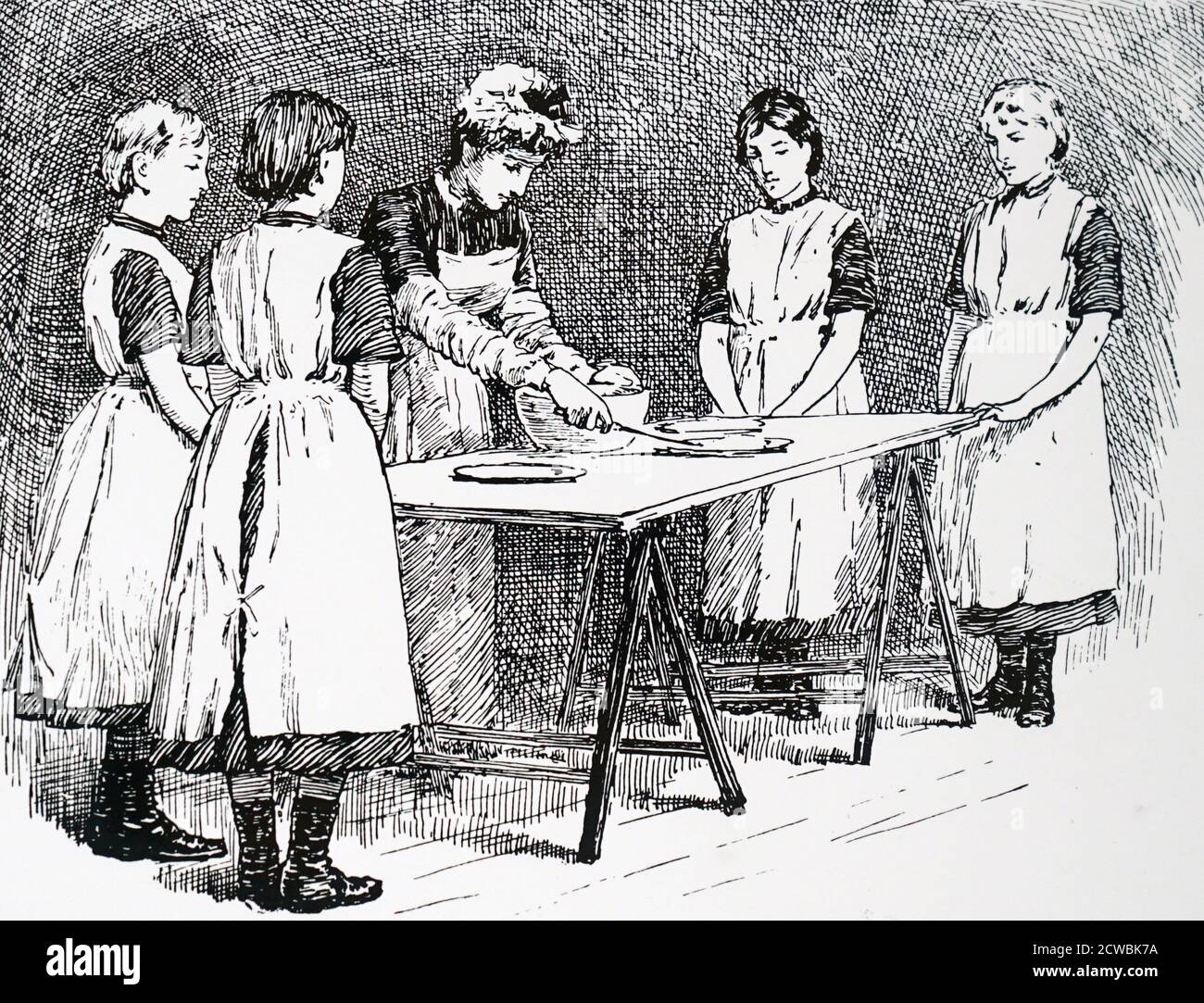 Engraving depicting a cooking class at the Ladies Charity School, Powis Gardens, Notting Hill, London, founded in 1702. Stock Photohttps://www.alamy.com/image-license-details/?v=1https://www.alamy.com/engraving-depicting-a-cooking-class-at-the-ladies-charity-school-powis-gardens-notting-hill-london-founded-in-1702-image377040702.html
Engraving depicting a cooking class at the Ladies Charity School, Powis Gardens, Notting Hill, London, founded in 1702. Stock Photohttps://www.alamy.com/image-license-details/?v=1https://www.alamy.com/engraving-depicting-a-cooking-class-at-the-ladies-charity-school-powis-gardens-notting-hill-london-founded-in-1702-image377040702.htmlRM2CWBK7A–Engraving depicting a cooking class at the Ladies Charity School, Powis Gardens, Notting Hill, London, founded in 1702.
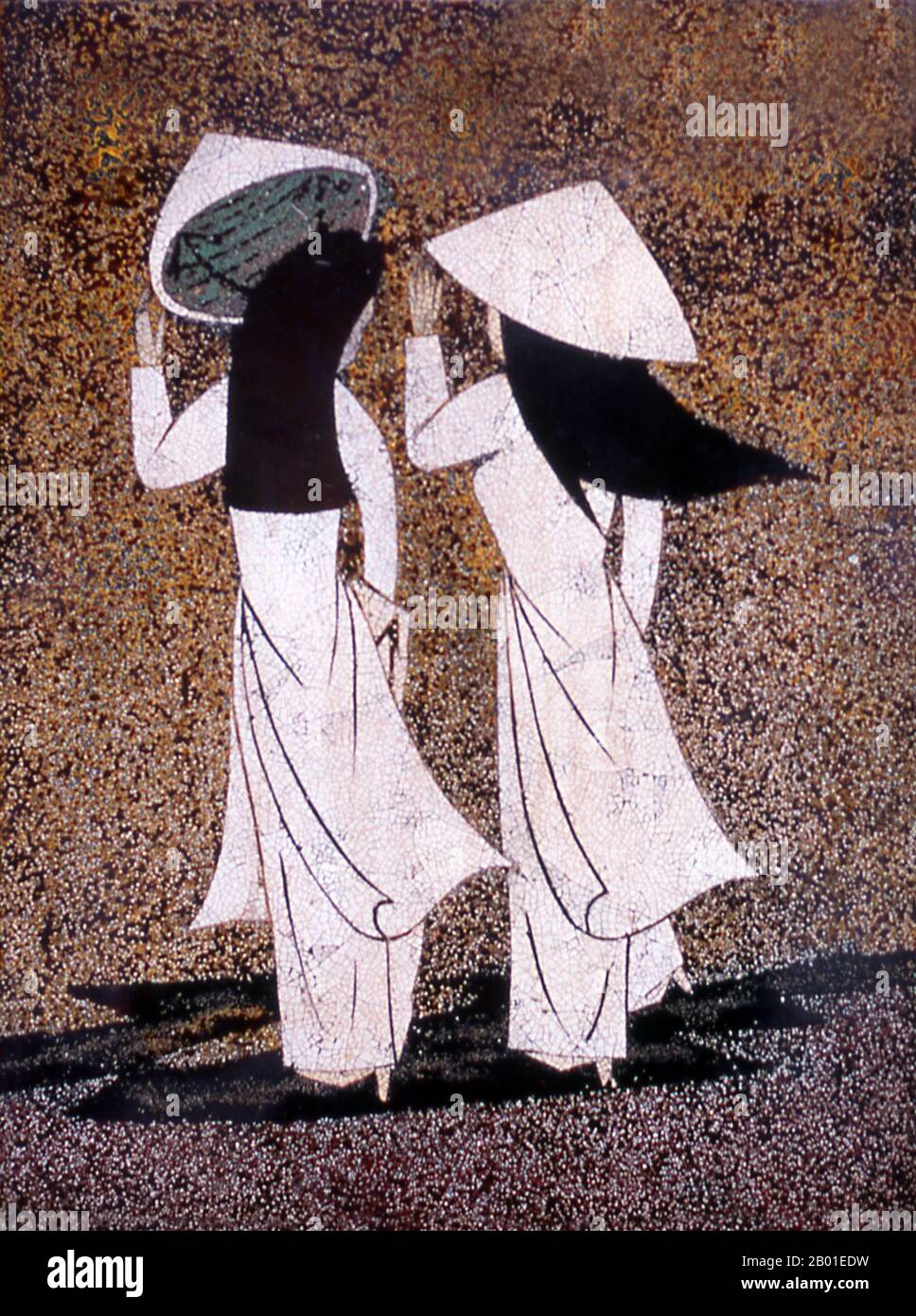 Vietnam: Lacquer painting on a wall of women in ao dai ('long dress'), Nha Tho Road, Hanoi. The ao dai (Vietnamese: áo dài) is a Vietnamese national costume, now most commonly for women. In its current form, it is a tight-fitting silk tunic worn over pantaloons. The word is pronounced ow-zye in the north and ow-yai in the south, and translates as 'long dress'. The name áo dài was originally applied to the dress worn at the court of the Nguyễn Lords at Huế in the 18th century. This outfit evolved into the áo ngũ thân, a five-paneled aristocratic gown worn in the 19th and early 20th centuries. Stock Photohttps://www.alamy.com/image-license-details/?v=1https://www.alamy.com/vietnam-lacquer-painting-on-a-wall-of-women-in-ao-dai-long-dress-nha-tho-road-hanoi-the-ao-dai-vietnamese-o-di-is-a-vietnamese-national-costume-now-most-commonly-for-women-in-its-current-form-it-is-a-tight-fitting-silk-tunic-worn-over-pantaloons-the-word-is-pronounced-ow-zye-in-the-north-and-ow-yai-in-the-south-and-translates-as-long-dress-the-name-o-di-was-originally-applied-to-the-dress-worn-at-the-court-of-the-nguyn-lords-at-hu-in-the-18th-century-this-outfit-evolved-into-the-o-ng-thn-a-five-paneled-aristocratic-gown-worn-in-the-19th-and-early-20th-centuries-image344240677.html
Vietnam: Lacquer painting on a wall of women in ao dai ('long dress'), Nha Tho Road, Hanoi. The ao dai (Vietnamese: áo dài) is a Vietnamese national costume, now most commonly for women. In its current form, it is a tight-fitting silk tunic worn over pantaloons. The word is pronounced ow-zye in the north and ow-yai in the south, and translates as 'long dress'. The name áo dài was originally applied to the dress worn at the court of the Nguyễn Lords at Huế in the 18th century. This outfit evolved into the áo ngũ thân, a five-paneled aristocratic gown worn in the 19th and early 20th centuries. Stock Photohttps://www.alamy.com/image-license-details/?v=1https://www.alamy.com/vietnam-lacquer-painting-on-a-wall-of-women-in-ao-dai-long-dress-nha-tho-road-hanoi-the-ao-dai-vietnamese-o-di-is-a-vietnamese-national-costume-now-most-commonly-for-women-in-its-current-form-it-is-a-tight-fitting-silk-tunic-worn-over-pantaloons-the-word-is-pronounced-ow-zye-in-the-north-and-ow-yai-in-the-south-and-translates-as-long-dress-the-name-o-di-was-originally-applied-to-the-dress-worn-at-the-court-of-the-nguyn-lords-at-hu-in-the-18th-century-this-outfit-evolved-into-the-o-ng-thn-a-five-paneled-aristocratic-gown-worn-in-the-19th-and-early-20th-centuries-image344240677.htmlRM2B01EDW–Vietnam: Lacquer painting on a wall of women in ao dai ('long dress'), Nha Tho Road, Hanoi. The ao dai (Vietnamese: áo dài) is a Vietnamese national costume, now most commonly for women. In its current form, it is a tight-fitting silk tunic worn over pantaloons. The word is pronounced ow-zye in the north and ow-yai in the south, and translates as 'long dress'. The name áo dài was originally applied to the dress worn at the court of the Nguyễn Lords at Huế in the 18th century. This outfit evolved into the áo ngũ thân, a five-paneled aristocratic gown worn in the 19th and early 20th centuries.
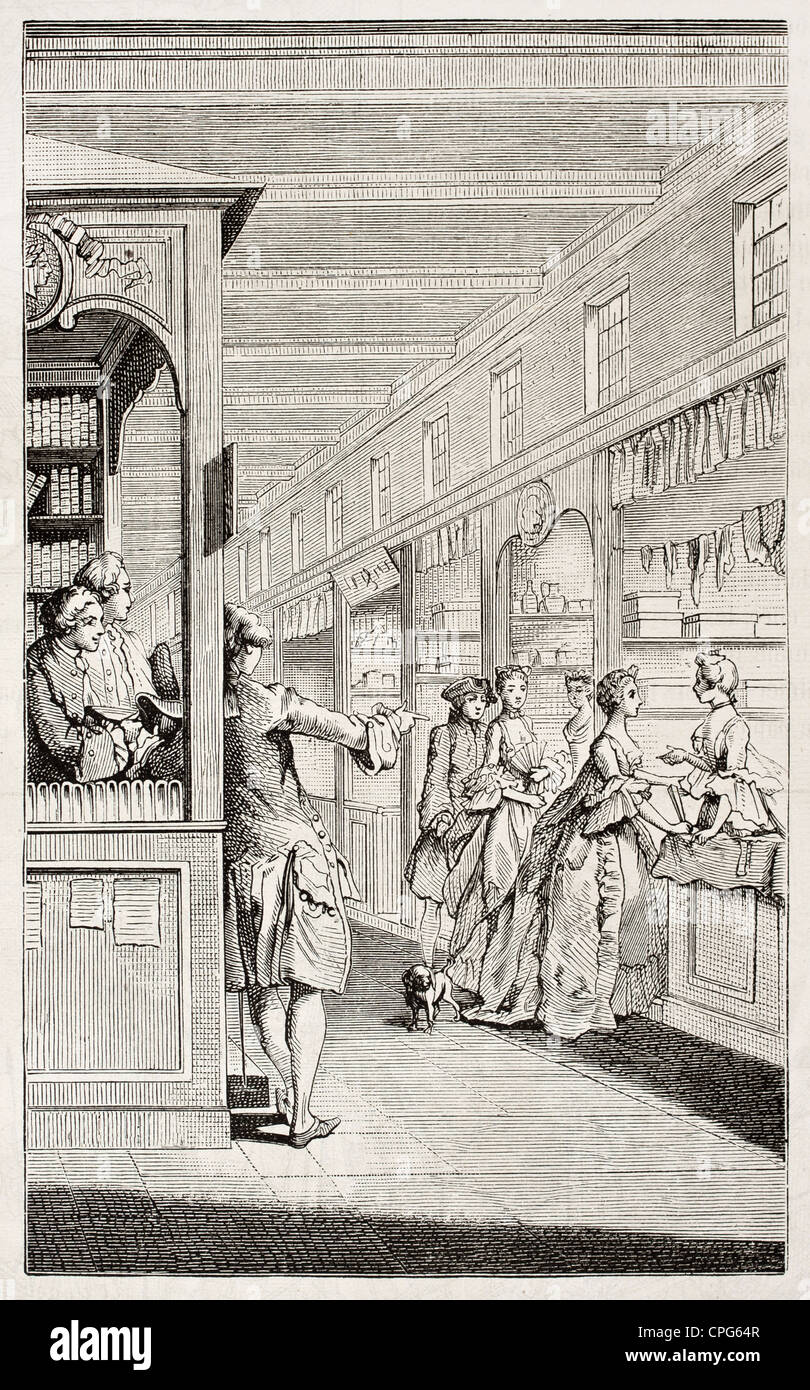 18th century library old engraved illustration Stock Photohttps://www.alamy.com/image-license-details/?v=1https://www.alamy.com/stock-photo-18th-century-library-old-engraved-illustration-48299239.html
18th century library old engraved illustration Stock Photohttps://www.alamy.com/image-license-details/?v=1https://www.alamy.com/stock-photo-18th-century-library-old-engraved-illustration-48299239.htmlRFCPG64R–18th century library old engraved illustration
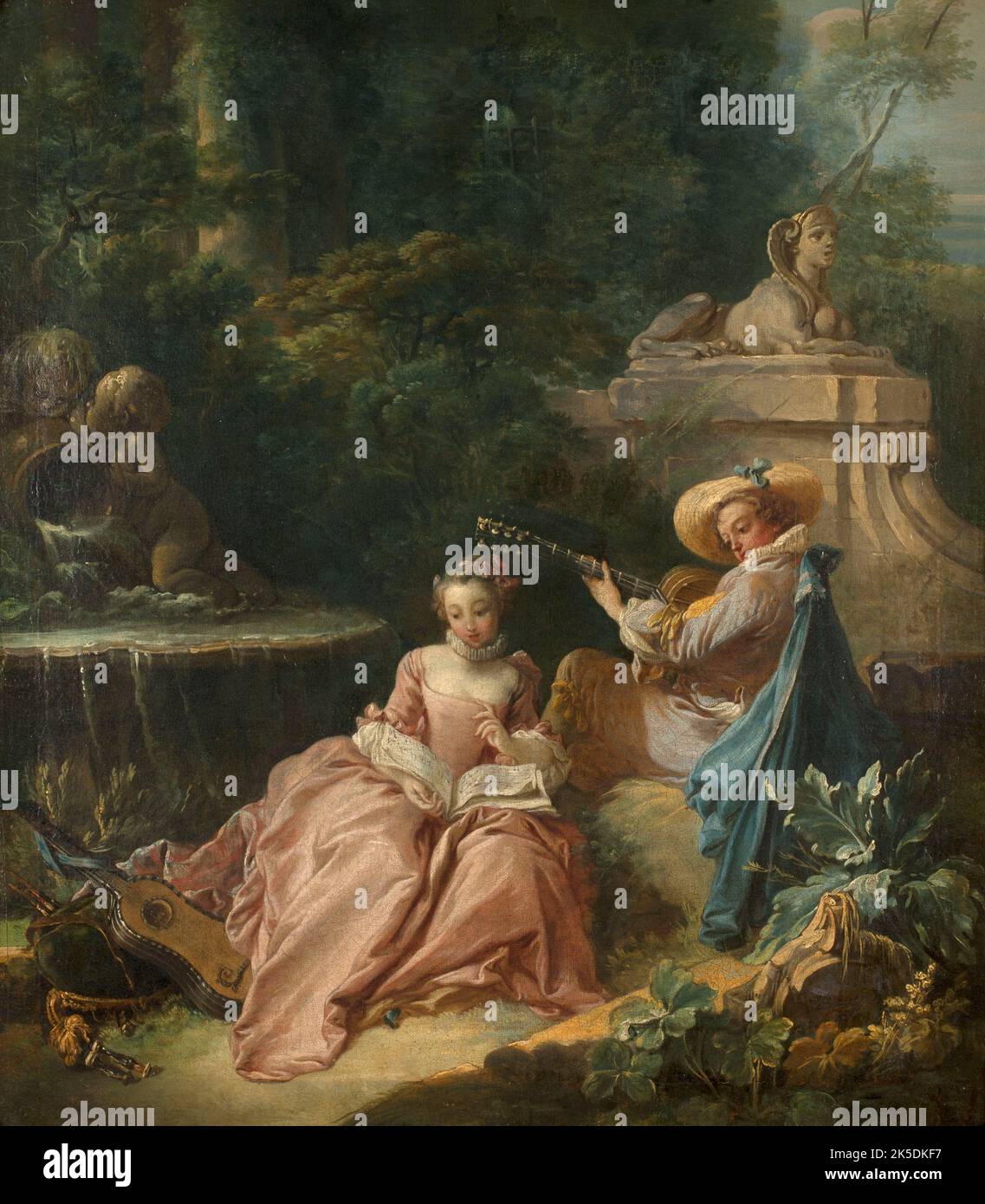 La Leçon de musique, 18th century. The music lesson. Stock Photohttps://www.alamy.com/image-license-details/?v=1https://www.alamy.com/la-lexe7on-de-musique-18th-century-the-music-lesson-image485264283.html
La Leçon de musique, 18th century. The music lesson. Stock Photohttps://www.alamy.com/image-license-details/?v=1https://www.alamy.com/la-lexe7on-de-musique-18th-century-the-music-lesson-image485264283.htmlRM2K5DKF7–La Leçon de musique, 18th century. The music lesson.
 Vietnam: Hotel assistant in a traditional Vietnamese ao dai ('long dress') at the Hanoi Daewoo Hotel, Hanoi. The ao dai (Vietnamese: áo dài) is a Vietnamese national costume, now most commonly for women. In its current form, it is a tight-fitting silk tunic worn over pantaloons. The word is pronounced ow-zye in the north and ow-yai in the south, and translates as 'long dress'. The name áo dài was originally applied to the dress worn at the court of the Nguyễn Lords at Huế in the 18th century. This outfit evolved into the áo ngũ thân, a five-paneled aristocratic gown. Stock Photohttps://www.alamy.com/image-license-details/?v=1https://www.alamy.com/vietnam-hotel-assistant-in-a-traditional-vietnamese-ao-dai-long-dress-at-the-hanoi-daewoo-hotel-hanoi-the-ao-dai-vietnamese-o-di-is-a-vietnamese-national-costume-now-most-commonly-for-women-in-its-current-form-it-is-a-tight-fitting-silk-tunic-worn-over-pantaloons-the-word-is-pronounced-ow-zye-in-the-north-and-ow-yai-in-the-south-and-translates-as-long-dress-the-name-o-di-was-originally-applied-to-the-dress-worn-at-the-court-of-the-nguyn-lords-at-hu-in-the-18th-century-this-outfit-evolved-into-the-o-ng-thn-a-five-paneled-aristocratic-gown-image344240676.html
Vietnam: Hotel assistant in a traditional Vietnamese ao dai ('long dress') at the Hanoi Daewoo Hotel, Hanoi. The ao dai (Vietnamese: áo dài) is a Vietnamese national costume, now most commonly for women. In its current form, it is a tight-fitting silk tunic worn over pantaloons. The word is pronounced ow-zye in the north and ow-yai in the south, and translates as 'long dress'. The name áo dài was originally applied to the dress worn at the court of the Nguyễn Lords at Huế in the 18th century. This outfit evolved into the áo ngũ thân, a five-paneled aristocratic gown. Stock Photohttps://www.alamy.com/image-license-details/?v=1https://www.alamy.com/vietnam-hotel-assistant-in-a-traditional-vietnamese-ao-dai-long-dress-at-the-hanoi-daewoo-hotel-hanoi-the-ao-dai-vietnamese-o-di-is-a-vietnamese-national-costume-now-most-commonly-for-women-in-its-current-form-it-is-a-tight-fitting-silk-tunic-worn-over-pantaloons-the-word-is-pronounced-ow-zye-in-the-north-and-ow-yai-in-the-south-and-translates-as-long-dress-the-name-o-di-was-originally-applied-to-the-dress-worn-at-the-court-of-the-nguyn-lords-at-hu-in-the-18th-century-this-outfit-evolved-into-the-o-ng-thn-a-five-paneled-aristocratic-gown-image344240676.htmlRM2B01EDT–Vietnam: Hotel assistant in a traditional Vietnamese ao dai ('long dress') at the Hanoi Daewoo Hotel, Hanoi. The ao dai (Vietnamese: áo dài) is a Vietnamese national costume, now most commonly for women. In its current form, it is a tight-fitting silk tunic worn over pantaloons. The word is pronounced ow-zye in the north and ow-yai in the south, and translates as 'long dress'. The name áo dài was originally applied to the dress worn at the court of the Nguyễn Lords at Huế in the 18th century. This outfit evolved into the áo ngũ thân, a five-paneled aristocratic gown.
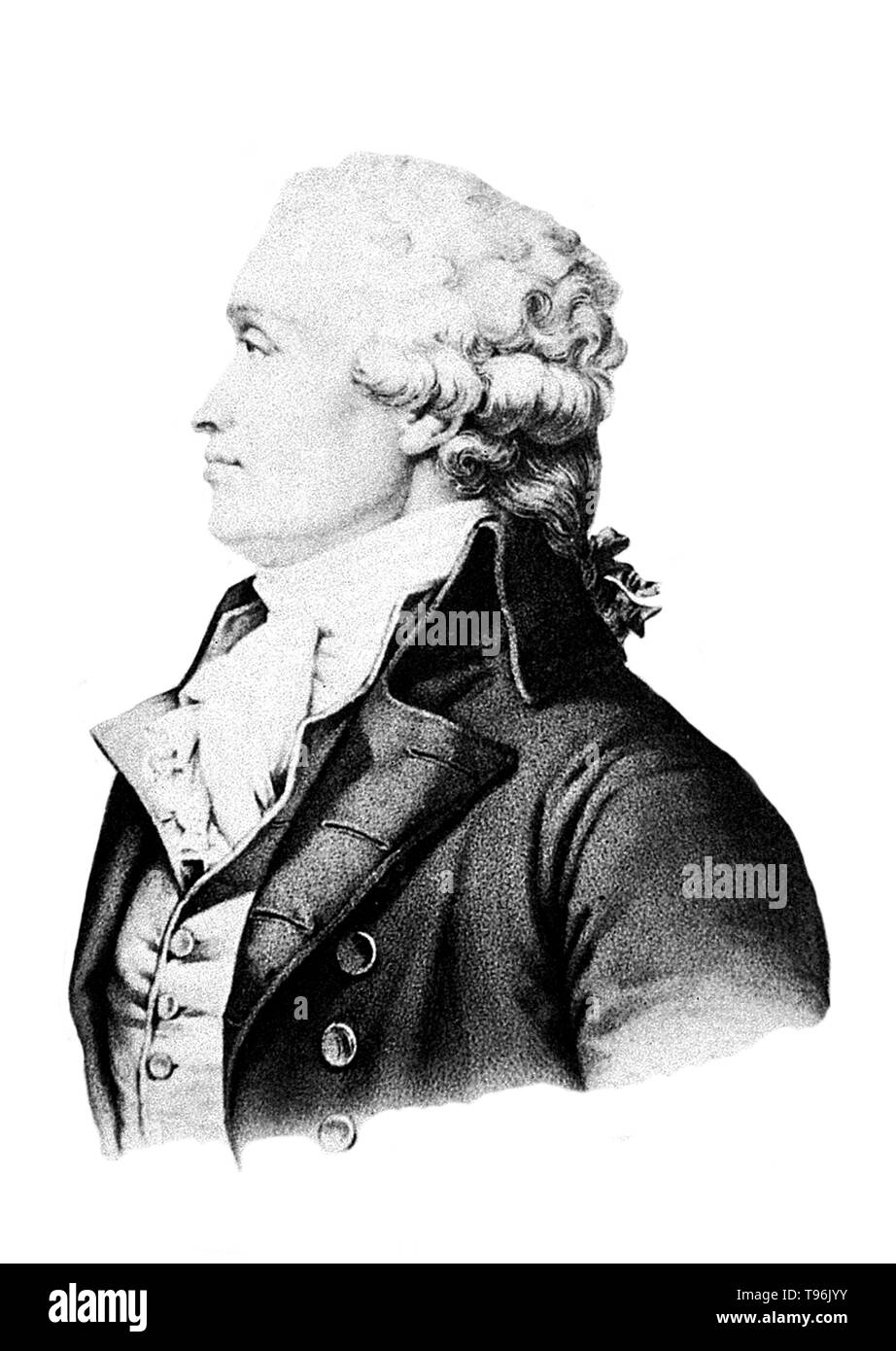 Marie Jean Antoine Nicolas de Caritat, marquis de Condorcet (September 17, 1743 - March 28, 1794) was a French philosopher, mathematician, and early political scientist whose Condorcet method in voting tally selects the candidate who would beat each of the other candidates in a run-off election. He advocated a liberal economy, free and equal public education, constitutionalism, and equal rights for women and people of all races. Stock Photohttps://www.alamy.com/image-license-details/?v=1https://www.alamy.com/marie-jean-antoine-nicolas-de-caritat-marquis-de-condorcet-september-17-1743-march-28-1794-was-a-french-philosopher-mathematician-and-early-political-scientist-whose-condorcet-method-in-voting-tally-selects-the-candidate-who-would-beat-each-of-the-other-candidates-in-a-run-off-election-he-advocated-a-liberal-economy-free-and-equal-public-education-constitutionalism-and-equal-rights-for-women-and-people-of-all-races-image246623663.html
Marie Jean Antoine Nicolas de Caritat, marquis de Condorcet (September 17, 1743 - March 28, 1794) was a French philosopher, mathematician, and early political scientist whose Condorcet method in voting tally selects the candidate who would beat each of the other candidates in a run-off election. He advocated a liberal economy, free and equal public education, constitutionalism, and equal rights for women and people of all races. Stock Photohttps://www.alamy.com/image-license-details/?v=1https://www.alamy.com/marie-jean-antoine-nicolas-de-caritat-marquis-de-condorcet-september-17-1743-march-28-1794-was-a-french-philosopher-mathematician-and-early-political-scientist-whose-condorcet-method-in-voting-tally-selects-the-candidate-who-would-beat-each-of-the-other-candidates-in-a-run-off-election-he-advocated-a-liberal-economy-free-and-equal-public-education-constitutionalism-and-equal-rights-for-women-and-people-of-all-races-image246623663.htmlRMT96JYY–Marie Jean Antoine Nicolas de Caritat, marquis de Condorcet (September 17, 1743 - March 28, 1794) was a French philosopher, mathematician, and early political scientist whose Condorcet method in voting tally selects the candidate who would beat each of the other candidates in a run-off election. He advocated a liberal economy, free and equal public education, constitutionalism, and equal rights for women and people of all races.
 James Joyce Centre, Dublin, Co Dublin, Ireland; Women Reading In A Room Stock Photohttps://www.alamy.com/image-license-details/?v=1https://www.alamy.com/stock-photo-james-joyce-centre-dublin-co-dublin-ireland-women-reading-in-a-room-31431030.html
James Joyce Centre, Dublin, Co Dublin, Ireland; Women Reading In A Room Stock Photohttps://www.alamy.com/image-license-details/?v=1https://www.alamy.com/stock-photo-james-joyce-centre-dublin-co-dublin-ireland-women-reading-in-a-room-31431030.htmlRMBR3PGP–James Joyce Centre, Dublin, Co Dublin, Ireland; Women Reading In A Room
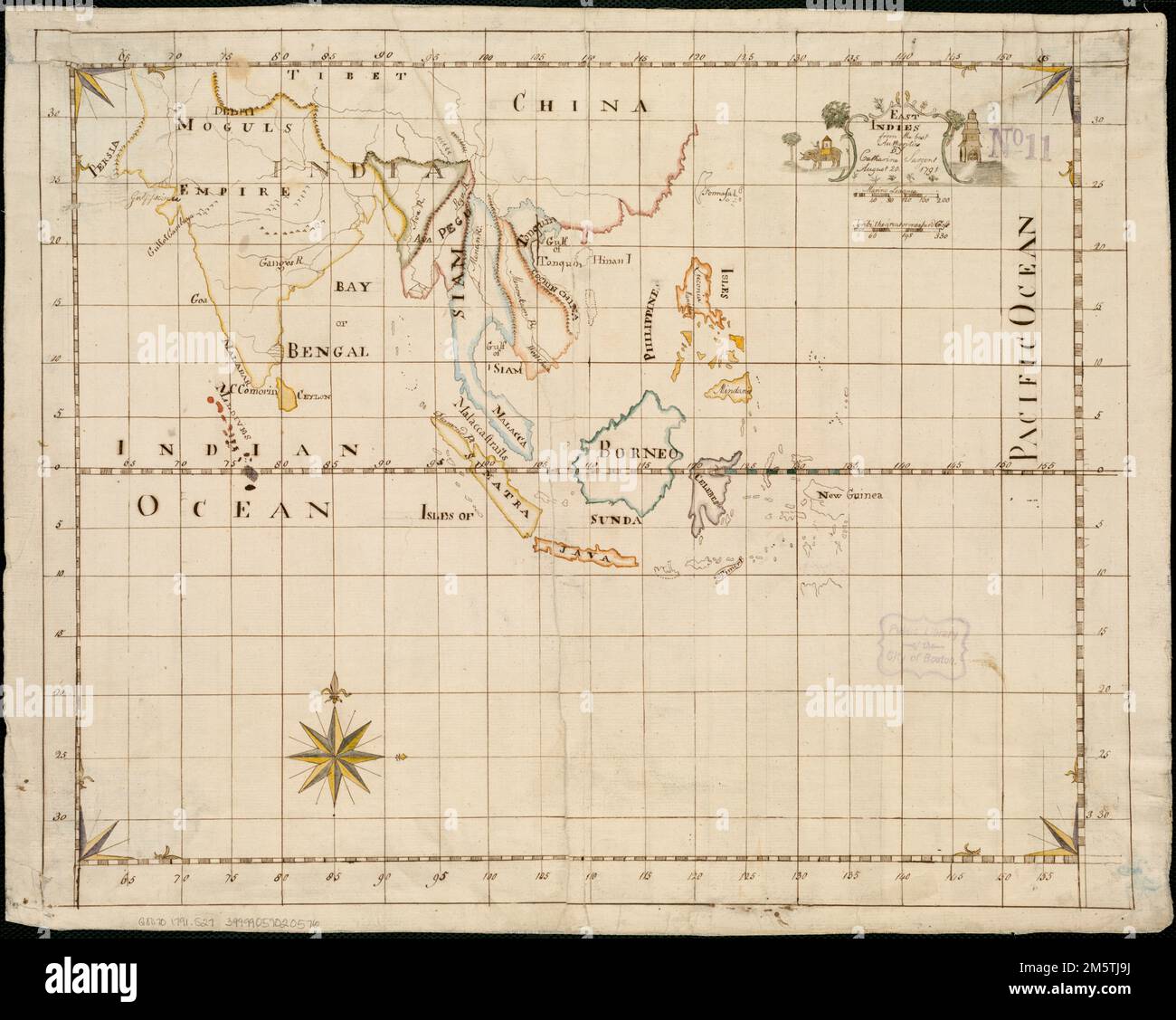 East Indies from the best authorities. Manuscript map, drawn by a schoolgirl. Relief shown pictorially. Includes decorative cartouche.. Prior to the American Revolutionary War, females received little formal education. However, this changed in the new Republic. Dame schools, run by women in their homes, taught reading, writing and numbers to young children, and needlework to girls. Private female academies, founded in the late 18th century, greatly expanded upon the subjects previously taught to girls. The academies taught not only the basic subjects, but geography, history, and natural scienc Stock Photohttps://www.alamy.com/image-license-details/?v=1https://www.alamy.com/east-indies-from-the-best-authorities-manuscript-map-drawn-by-a-schoolgirl-relief-shown-pictorially-includes-decorative-cartouche-prior-to-the-american-revolutionary-war-females-received-little-formal-education-however-this-changed-in-the-new-republic-dame-schools-run-by-women-in-their-homes-taught-reading-writing-and-numbers-to-young-children-and-needlework-to-girls-private-female-academies-founded-in-the-late-18th-century-greatly-expanded-upon-the-subjects-previously-taught-to-girls-the-academies-taught-not-only-the-basic-subjects-but-geography-history-and-natural-scienc-image502715182.html
East Indies from the best authorities. Manuscript map, drawn by a schoolgirl. Relief shown pictorially. Includes decorative cartouche.. Prior to the American Revolutionary War, females received little formal education. However, this changed in the new Republic. Dame schools, run by women in their homes, taught reading, writing and numbers to young children, and needlework to girls. Private female academies, founded in the late 18th century, greatly expanded upon the subjects previously taught to girls. The academies taught not only the basic subjects, but geography, history, and natural scienc Stock Photohttps://www.alamy.com/image-license-details/?v=1https://www.alamy.com/east-indies-from-the-best-authorities-manuscript-map-drawn-by-a-schoolgirl-relief-shown-pictorially-includes-decorative-cartouche-prior-to-the-american-revolutionary-war-females-received-little-formal-education-however-this-changed-in-the-new-republic-dame-schools-run-by-women-in-their-homes-taught-reading-writing-and-numbers-to-young-children-and-needlework-to-girls-private-female-academies-founded-in-the-late-18th-century-greatly-expanded-upon-the-subjects-previously-taught-to-girls-the-academies-taught-not-only-the-basic-subjects-but-geography-history-and-natural-scienc-image502715182.htmlRM2M5TJ9J–East Indies from the best authorities. Manuscript map, drawn by a schoolgirl. Relief shown pictorially. Includes decorative cartouche.. Prior to the American Revolutionary War, females received little formal education. However, this changed in the new Republic. Dame schools, run by women in their homes, taught reading, writing and numbers to young children, and needlework to girls. Private female academies, founded in the late 18th century, greatly expanded upon the subjects previously taught to girls. The academies taught not only the basic subjects, but geography, history, and natural scienc
 Mary Wollstonecraft (April 27, 1759 - September 10, 1797) was an eighteenth-century English writer, philosopher, and advocate of women's rights. During her brief career, she wrote novels, treatises, a travel narrative, a history of the French Revolution, Stock Photohttps://www.alamy.com/image-license-details/?v=1https://www.alamy.com/stock-photo-mary-wollstonecraft-april-27-1759-september-10-1797-was-an-eighteenth-104003127.html
Mary Wollstonecraft (April 27, 1759 - September 10, 1797) was an eighteenth-century English writer, philosopher, and advocate of women's rights. During her brief career, she wrote novels, treatises, a travel narrative, a history of the French Revolution, Stock Photohttps://www.alamy.com/image-license-details/?v=1https://www.alamy.com/stock-photo-mary-wollstonecraft-april-27-1759-september-10-1797-was-an-eighteenth-104003127.htmlRMG15N1B–Mary Wollstonecraft (April 27, 1759 - September 10, 1797) was an eighteenth-century English writer, philosopher, and advocate of women's rights. During her brief career, she wrote novels, treatises, a travel narrative, a history of the French Revolution,
 Colonial Williamsburg Historic Area, Women in Period Costume Stock Photohttps://www.alamy.com/image-license-details/?v=1https://www.alamy.com/stock-photo-colonial-williamsburg-historic-area-women-in-period-costume-43215885.html
Colonial Williamsburg Historic Area, Women in Period Costume Stock Photohttps://www.alamy.com/image-license-details/?v=1https://www.alamy.com/stock-photo-colonial-williamsburg-historic-area-women-in-period-costume-43215885.htmlRMCE8J8D–Colonial Williamsburg Historic Area, Women in Period Costume
 XVIII century, family life in Prussian upper class family: girls dressed as little woman help with domestic chores Stock Photohttps://www.alamy.com/image-license-details/?v=1https://www.alamy.com/stock-photo-xviii-century-family-life-in-prussian-upper-class-family-girls-dressed-111091636.html
XVIII century, family life in Prussian upper class family: girls dressed as little woman help with domestic chores Stock Photohttps://www.alamy.com/image-license-details/?v=1https://www.alamy.com/stock-photo-xviii-century-family-life-in-prussian-upper-class-family-girls-dressed-111091636.htmlRFGCMJEC–XVIII century, family life in Prussian upper class family: girls dressed as little woman help with domestic chores
 Vintage illustrations of Millinery in the 18th and 19th century. Stock Photohttps://www.alamy.com/image-license-details/?v=1https://www.alamy.com/vintage-illustrations-of-millinery-in-the-18th-and-19th-century-image350030291.html
Vintage illustrations of Millinery in the 18th and 19th century. Stock Photohttps://www.alamy.com/image-license-details/?v=1https://www.alamy.com/vintage-illustrations-of-millinery-in-the-18th-and-19th-century-image350030291.htmlRF2B9D75R–Vintage illustrations of Millinery in the 18th and 19th century.
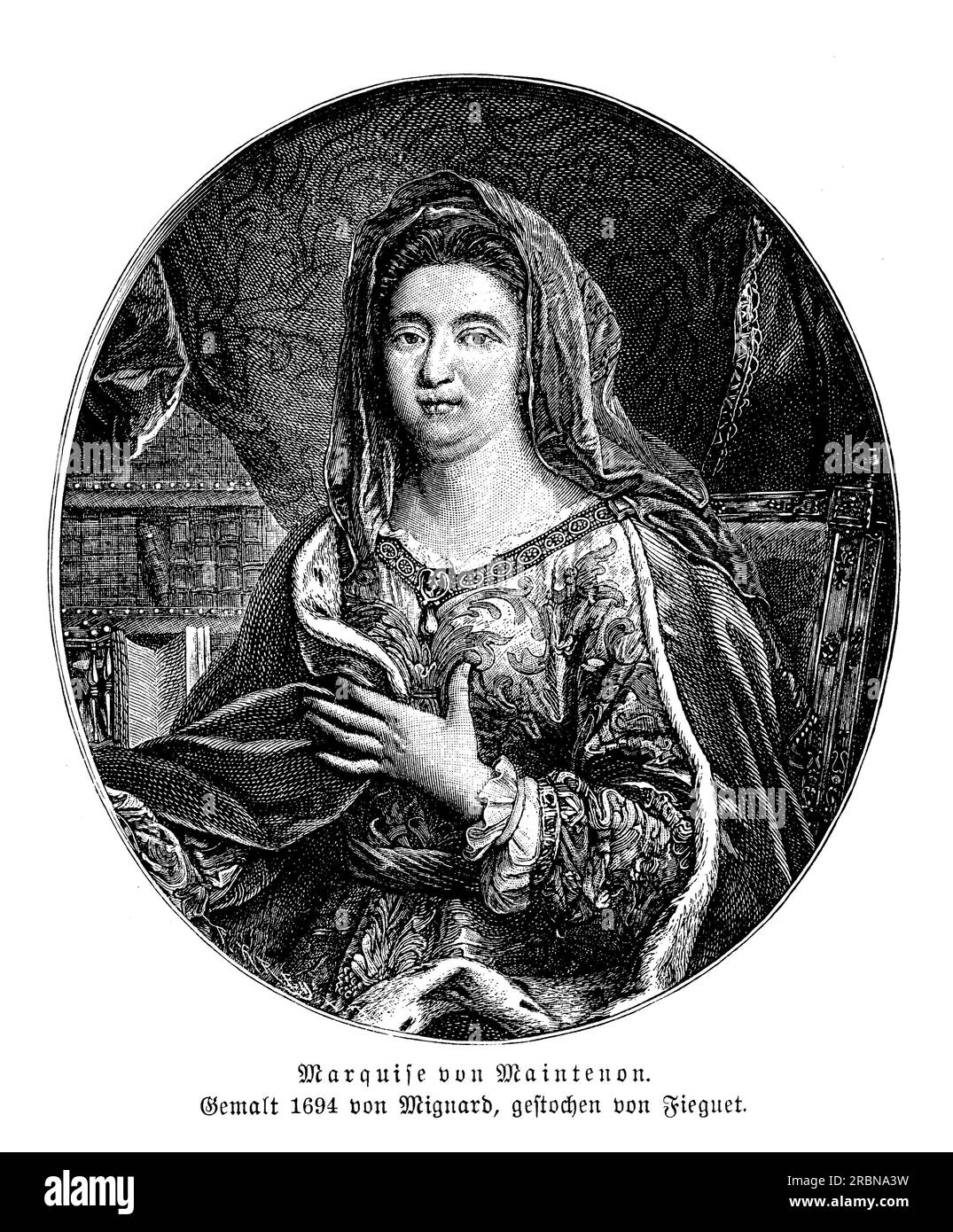 Portrait of the Marquise of Maintenon, born Françoise d'Aubigné, second wife of King Louis XIV of France. She was a close confidante of the king and exercised significant political influence during his reign. Maintenon is also known for her philanthropy and her establishment of the Maison royale de Saint-Louis, a school for the education of poor noble girls. Despite her many accomplishments, Maintenon was not universally popular, and her influence over the king was often criticized. After the king's death, she retired to a convent, where she continued her philanthropic work Stock Photohttps://www.alamy.com/image-license-details/?v=1https://www.alamy.com/portrait-of-the-marquise-of-maintenon-born-franoise-daubign-second-wife-of-king-louis-xiv-of-france-she-was-a-close-confidante-of-the-king-and-exercised-significant-political-influence-during-his-reign-maintenon-is-also-known-for-her-philanthropy-and-her-establishment-of-the-maison-royale-de-saint-louis-a-school-for-the-education-of-poor-noble-girls-despite-her-many-accomplishments-maintenon-was-not-universally-popular-and-her-influence-over-the-king-was-often-criticized-after-the-kings-death-she-retired-to-a-convent-where-she-continued-her-philanthropic-work-image557961933.html
Portrait of the Marquise of Maintenon, born Françoise d'Aubigné, second wife of King Louis XIV of France. She was a close confidante of the king and exercised significant political influence during his reign. Maintenon is also known for her philanthropy and her establishment of the Maison royale de Saint-Louis, a school for the education of poor noble girls. Despite her many accomplishments, Maintenon was not universally popular, and her influence over the king was often criticized. After the king's death, she retired to a convent, where she continued her philanthropic work Stock Photohttps://www.alamy.com/image-license-details/?v=1https://www.alamy.com/portrait-of-the-marquise-of-maintenon-born-franoise-daubign-second-wife-of-king-louis-xiv-of-france-she-was-a-close-confidante-of-the-king-and-exercised-significant-political-influence-during-his-reign-maintenon-is-also-known-for-her-philanthropy-and-her-establishment-of-the-maison-royale-de-saint-louis-a-school-for-the-education-of-poor-noble-girls-despite-her-many-accomplishments-maintenon-was-not-universally-popular-and-her-influence-over-the-king-was-often-criticized-after-the-kings-death-she-retired-to-a-convent-where-she-continued-her-philanthropic-work-image557961933.htmlRM2RBNA3W–Portrait of the Marquise of Maintenon, born Françoise d'Aubigné, second wife of King Louis XIV of France. She was a close confidante of the king and exercised significant political influence during his reign. Maintenon is also known for her philanthropy and her establishment of the Maison royale de Saint-Louis, a school for the education of poor noble girls. Despite her many accomplishments, Maintenon was not universally popular, and her influence over the king was often criticized. After the king's death, she retired to a convent, where she continued her philanthropic work
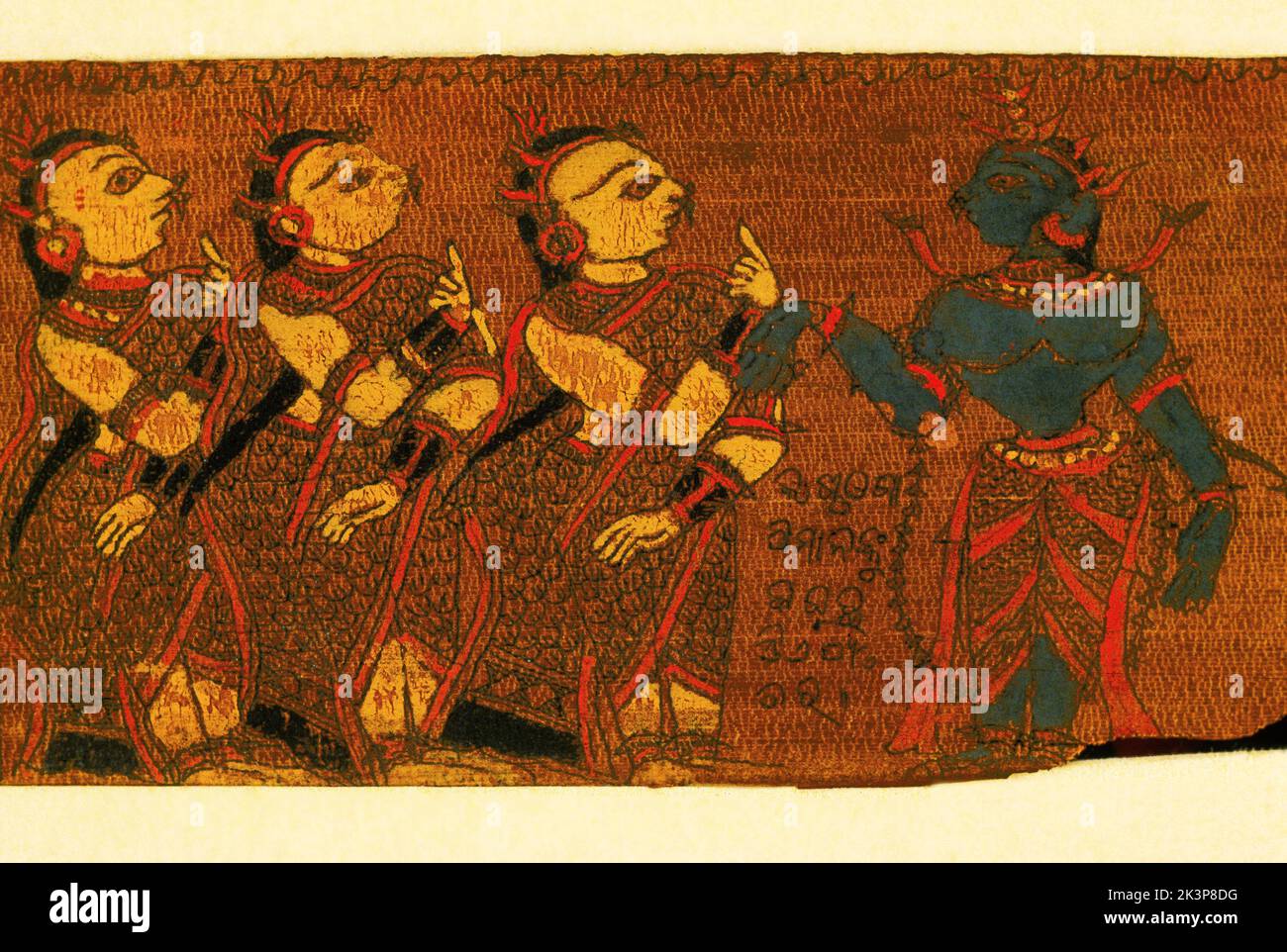 India: Orissa, 18th century, Palm leaf manuscript, Rasa poem book text and pictures, Details, women Stock Photohttps://www.alamy.com/image-license-details/?v=1https://www.alamy.com/india-orissa-18th-century-palm-leaf-manuscript-rasa-poem-book-text-and-pictures-details-women-image484223868.html
India: Orissa, 18th century, Palm leaf manuscript, Rasa poem book text and pictures, Details, women Stock Photohttps://www.alamy.com/image-license-details/?v=1https://www.alamy.com/india-orissa-18th-century-palm-leaf-manuscript-rasa-poem-book-text-and-pictures-details-women-image484223868.htmlRF2K3P8DG–India: Orissa, 18th century, Palm leaf manuscript, Rasa poem book text and pictures, Details, women
 Engraved portrait of Emma Hart Willard (1787 – 1870) an American women's rights activist who dedicated her life to education. She worked in several schools and founded the first school for women's higher education, the Troy Female Seminary in Troy, New York. Stock Photohttps://www.alamy.com/image-license-details/?v=1https://www.alamy.com/engraved-portrait-of-emma-hart-willard-1787-1870-an-american-womens-rights-activist-who-dedicated-her-life-to-education-she-worked-in-several-schools-and-founded-the-first-school-for-womens-higher-education-the-troy-female-seminary-in-troy-new-york-image454135622.html
Engraved portrait of Emma Hart Willard (1787 – 1870) an American women's rights activist who dedicated her life to education. She worked in several schools and founded the first school for women's higher education, the Troy Female Seminary in Troy, New York. Stock Photohttps://www.alamy.com/image-license-details/?v=1https://www.alamy.com/engraved-portrait-of-emma-hart-willard-1787-1870-an-american-womens-rights-activist-who-dedicated-her-life-to-education-she-worked-in-several-schools-and-founded-the-first-school-for-womens-higher-education-the-troy-female-seminary-in-troy-new-york-image454135622.htmlRM2HARJHA–Engraved portrait of Emma Hart Willard (1787 – 1870) an American women's rights activist who dedicated her life to education. She worked in several schools and founded the first school for women's higher education, the Troy Female Seminary in Troy, New York.
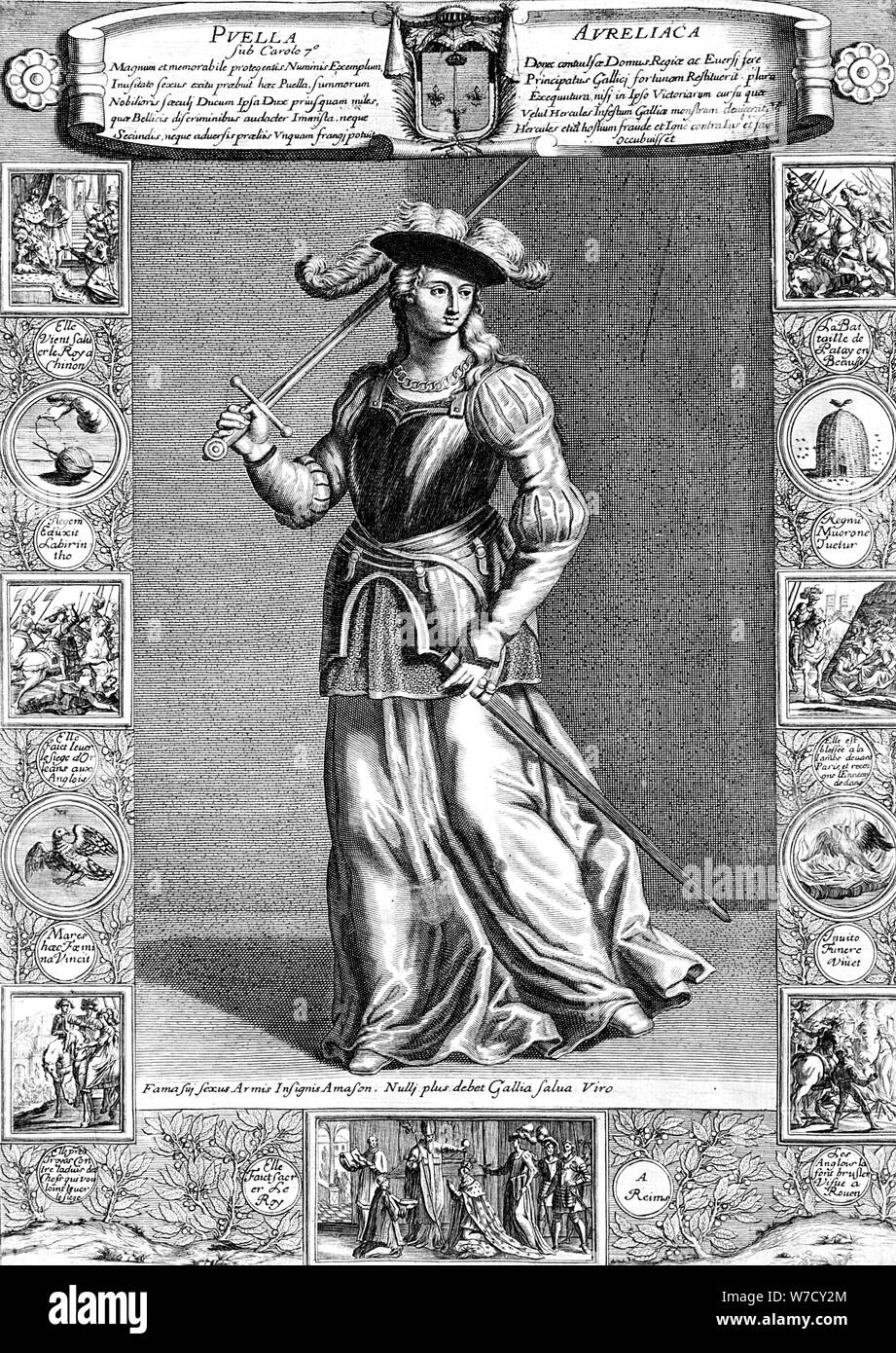 Joan of Arc, the Maid of Orleans, 15th century French patriot and martyr, 18th century. Artist: Unknown Stock Photohttps://www.alamy.com/image-license-details/?v=1https://www.alamy.com/joan-of-arc-the-maid-of-orleans-15th-century-french-patriot-and-martyr-18th-century-artist-unknown-image262742780.html
Joan of Arc, the Maid of Orleans, 15th century French patriot and martyr, 18th century. Artist: Unknown Stock Photohttps://www.alamy.com/image-license-details/?v=1https://www.alamy.com/joan-of-arc-the-maid-of-orleans-15th-century-french-patriot-and-martyr-18th-century-artist-unknown-image262742780.htmlRMW7CY2M–Joan of Arc, the Maid of Orleans, 15th century French patriot and martyr, 18th century. Artist: Unknown
 Seven young women in a bamboo grove. Color and black. Signature and seal. Date: 18th century. Origin: Japan. Period: Edo period. Ink and color on silk. Museum: Freer Gallery of Art and Arthur M. Sackler Gallery. Stock Photohttps://www.alamy.com/image-license-details/?v=1https://www.alamy.com/seven-young-women-in-a-bamboo-grove-color-and-black-signature-and-seal-date-18th-century-origin-japan-period-edo-period-ink-and-color-on-silk-museum-freer-gallery-of-art-and-arthur-m-sackler-gallery-image554746585.html
Seven young women in a bamboo grove. Color and black. Signature and seal. Date: 18th century. Origin: Japan. Period: Edo period. Ink and color on silk. Museum: Freer Gallery of Art and Arthur M. Sackler Gallery. Stock Photohttps://www.alamy.com/image-license-details/?v=1https://www.alamy.com/seven-young-women-in-a-bamboo-grove-color-and-black-signature-and-seal-date-18th-century-origin-japan-period-edo-period-ink-and-color-on-silk-museum-freer-gallery-of-art-and-arthur-m-sackler-gallery-image554746585.htmlRM2R6ETX1–Seven young women in a bamboo grove. Color and black. Signature and seal. Date: 18th century. Origin: Japan. Period: Edo period. Ink and color on silk. Museum: Freer Gallery of Art and Arthur M. Sackler Gallery.
 Marcello Bacciarelli (1731-1818). Italian painter. Granting to Privileges of the Academy of Krakow, 1796. Oil on canvas. 19th Century Polish Art Galle Stock Photohttps://www.alamy.com/image-license-details/?v=1https://www.alamy.com/marcello-bacciarelli-1731-1818-italian-painter-granting-to-privileges-of-the-academy-of-krakow-1796-oil-on-canvas-19th-century-polish-art-galle-image447936664.html
Marcello Bacciarelli (1731-1818). Italian painter. Granting to Privileges of the Academy of Krakow, 1796. Oil on canvas. 19th Century Polish Art Galle Stock Photohttps://www.alamy.com/image-license-details/?v=1https://www.alamy.com/marcello-bacciarelli-1731-1818-italian-painter-granting-to-privileges-of-the-academy-of-krakow-1796-oil-on-canvas-19th-century-polish-art-galle-image447936664.htmlRM2H0N7P0–Marcello Bacciarelli (1731-1818). Italian painter. Granting to Privileges of the Academy of Krakow, 1796. Oil on canvas. 19th Century Polish Art Galle
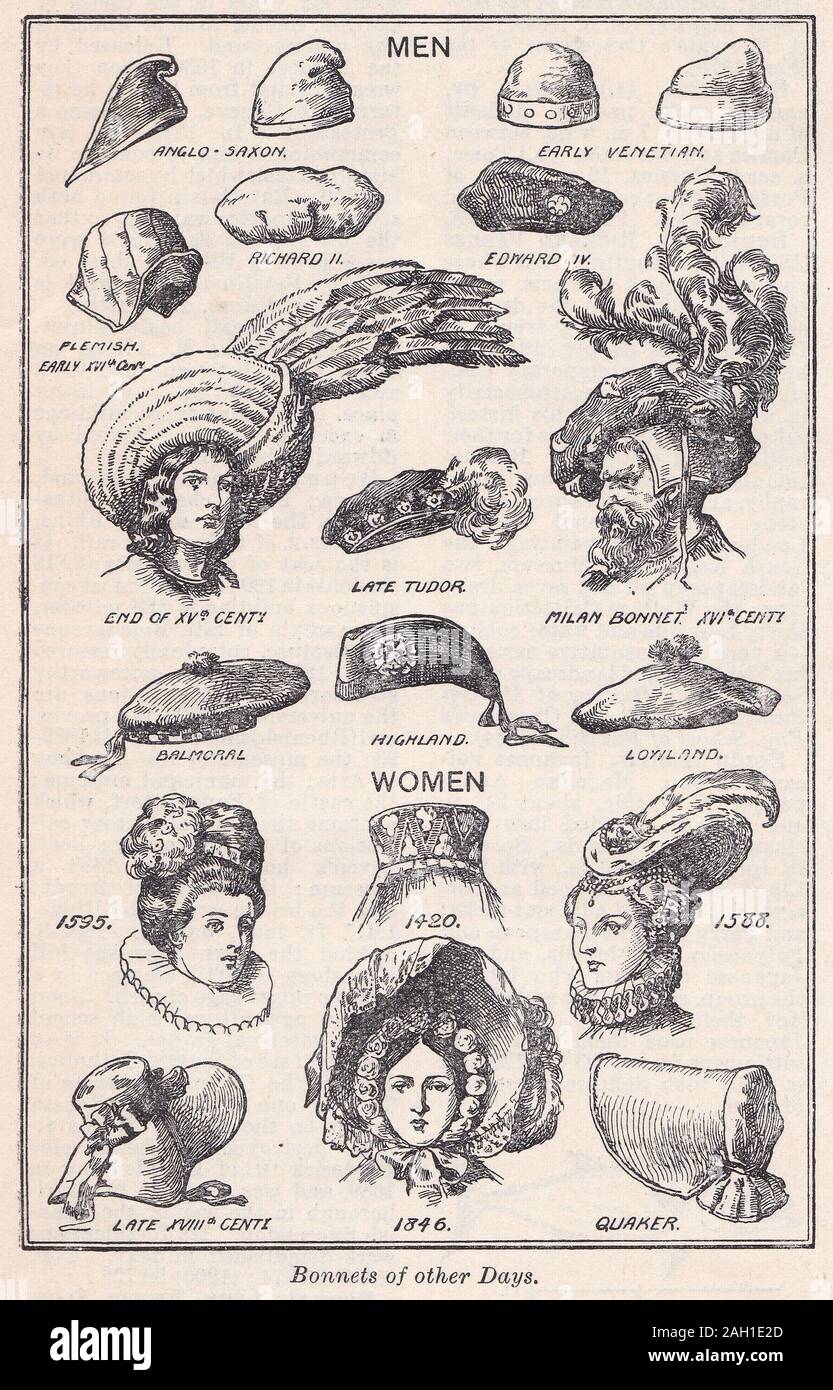 Vintage illustrations of Bonnets for men and women through the years Stock Photohttps://www.alamy.com/image-license-details/?v=1https://www.alamy.com/vintage-illustrations-of-bonnets-for-men-and-women-through-the-years-image337479141.html
Vintage illustrations of Bonnets for men and women through the years Stock Photohttps://www.alamy.com/image-license-details/?v=1https://www.alamy.com/vintage-illustrations-of-bonnets-for-men-and-women-through-the-years-image337479141.htmlRF2AH1E2D–Vintage illustrations of Bonnets for men and women through the years
 Engraving depicting a sewing class at the Ladies Charity School, Powis Gardens, Notting Hill, London, founded in 1702. Stock Photohttps://www.alamy.com/image-license-details/?v=1https://www.alamy.com/engraving-depicting-a-sewing-class-at-the-ladies-charity-school-powis-gardens-notting-hill-london-founded-in-1702-image377040685.html
Engraving depicting a sewing class at the Ladies Charity School, Powis Gardens, Notting Hill, London, founded in 1702. Stock Photohttps://www.alamy.com/image-license-details/?v=1https://www.alamy.com/engraving-depicting-a-sewing-class-at-the-ladies-charity-school-powis-gardens-notting-hill-london-founded-in-1702-image377040685.htmlRM2CWBK6N–Engraving depicting a sewing class at the Ladies Charity School, Powis Gardens, Notting Hill, London, founded in 1702.
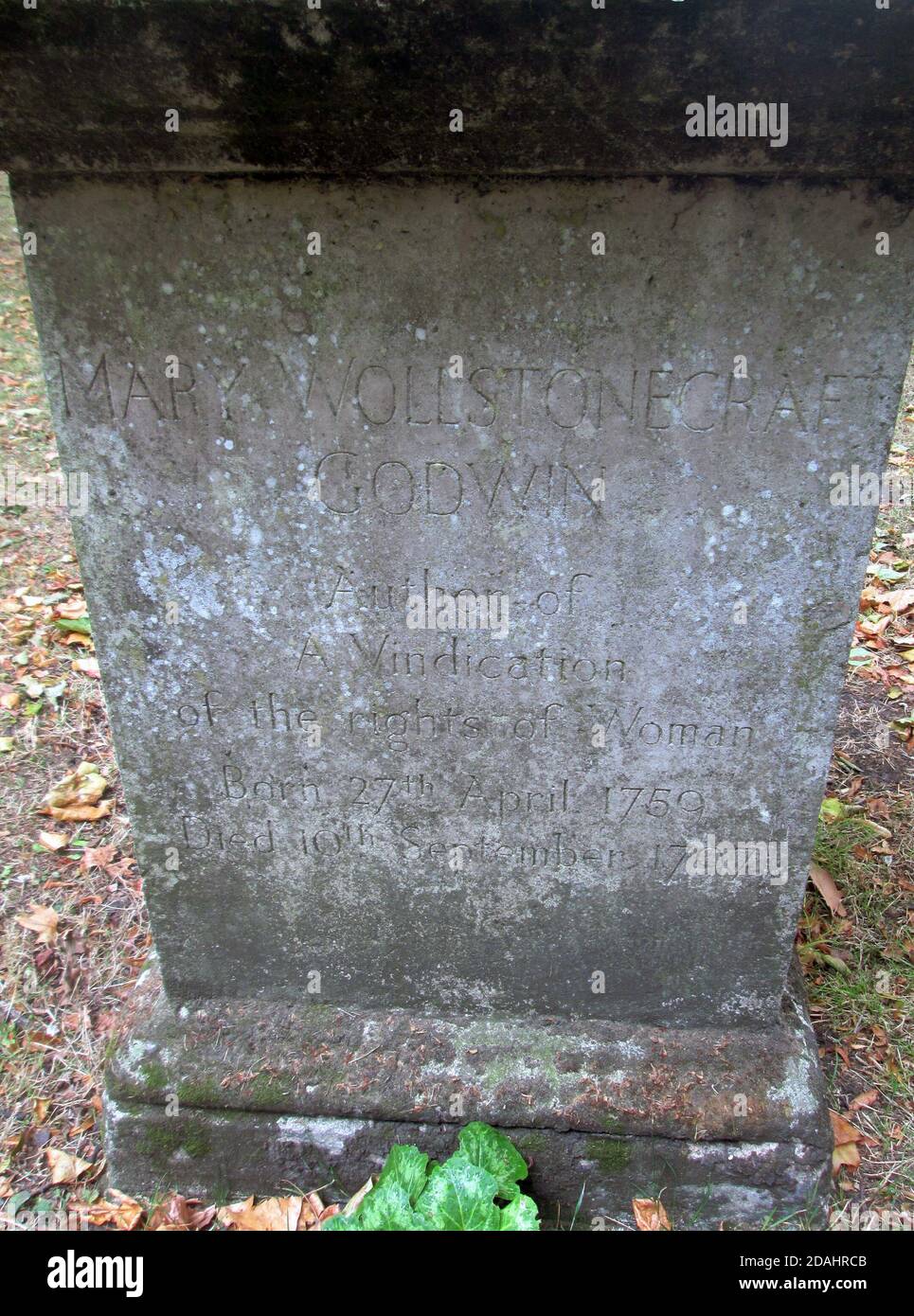 Grave marker of Mary Wollstonecraft English writer & philosopher, known for A Vindication of the Rights of Women, Old Saint Pancras Churchyard, London Stock Photohttps://www.alamy.com/image-license-details/?v=1https://www.alamy.com/grave-marker-of-mary-wollstonecraft-english-writer-philosopher-known-for-a-vindication-of-the-rights-of-women-old-saint-pancras-churchyard-london-image385166219.html
Grave marker of Mary Wollstonecraft English writer & philosopher, known for A Vindication of the Rights of Women, Old Saint Pancras Churchyard, London Stock Photohttps://www.alamy.com/image-license-details/?v=1https://www.alamy.com/grave-marker-of-mary-wollstonecraft-english-writer-philosopher-known-for-a-vindication-of-the-rights-of-women-old-saint-pancras-churchyard-london-image385166219.htmlRF2DAHRCB–Grave marker of Mary Wollstonecraft English writer & philosopher, known for A Vindication of the Rights of Women, Old Saint Pancras Churchyard, London
 FRENCH GIRLS RHETORIC Stock Photohttps://www.alamy.com/image-license-details/?v=1https://www.alamy.com/stock-photo-french-girls-rhetoric-56763320.html
FRENCH GIRLS RHETORIC Stock Photohttps://www.alamy.com/image-license-details/?v=1https://www.alamy.com/stock-photo-french-girls-rhetoric-56763320.htmlRMD89P5C–FRENCH GIRLS RHETORIC
 Parody of a scene from The Tale of Genji, early 18th century. Stock Photohttps://www.alamy.com/image-license-details/?v=1https://www.alamy.com/parody-of-a-scene-from-the-tale-of-genji-early-18th-century-image426151350.html
Parody of a scene from The Tale of Genji, early 18th century. Stock Photohttps://www.alamy.com/image-license-details/?v=1https://www.alamy.com/parody-of-a-scene-from-the-tale-of-genji-early-18th-century-image426151350.htmlRM2FN8TB2–Parody of a scene from The Tale of Genji, early 18th century.
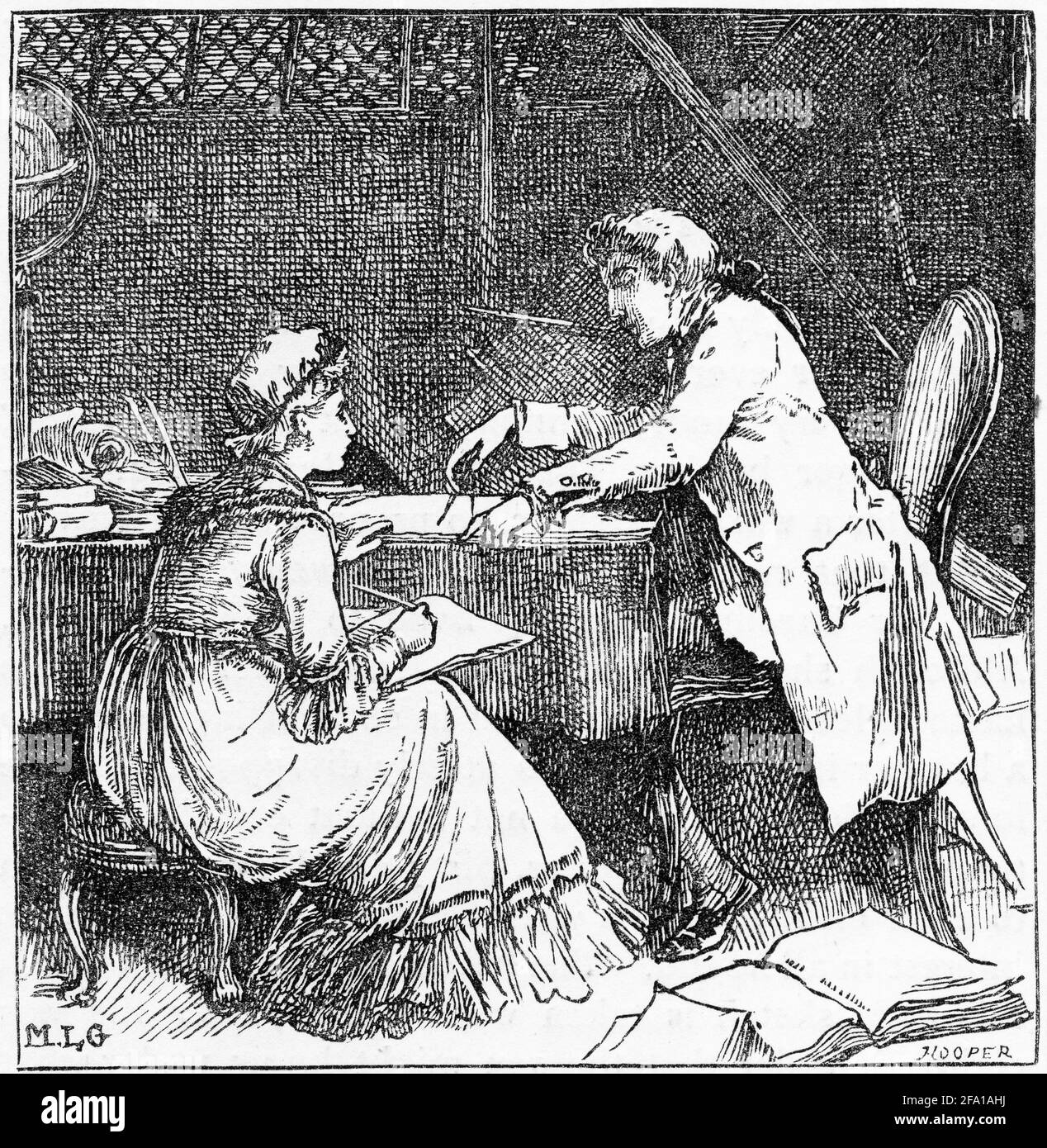 Engraving of a man with a set of dividers copying a set of scientific papers with a woman during the 1700s Stock Photohttps://www.alamy.com/image-license-details/?v=1https://www.alamy.com/engraving-of-a-man-with-a-set-of-dividers-copying-a-set-of-scientific-papers-with-a-woman-during-the-1700s-image419225678.html
Engraving of a man with a set of dividers copying a set of scientific papers with a woman during the 1700s Stock Photohttps://www.alamy.com/image-license-details/?v=1https://www.alamy.com/engraving-of-a-man-with-a-set-of-dividers-copying-a-set-of-scientific-papers-with-a-woman-during-the-1700s-image419225678.htmlRM2FA1AHJ–Engraving of a man with a set of dividers copying a set of scientific papers with a woman during the 1700s
 Netherlands, Franeker, Eise Eisinga Planetarium. The world's oldest functioning planetarium. UNESCO World Heritage Site Stock Photohttps://www.alamy.com/image-license-details/?v=1https://www.alamy.com/netherlands-franeker-eise-eisinga-planetarium-the-worlds-oldest-functioning-image62581733.html
Netherlands, Franeker, Eise Eisinga Planetarium. The world's oldest functioning planetarium. UNESCO World Heritage Site Stock Photohttps://www.alamy.com/image-license-details/?v=1https://www.alamy.com/netherlands-franeker-eise-eisinga-planetarium-the-worlds-oldest-functioning-image62581733.htmlRMDHPRHW–Netherlands, Franeker, Eise Eisinga Planetarium. The world's oldest functioning planetarium. UNESCO World Heritage Site
 Oxford England Magdalen College Oxford University Students Sitting on The Croquet Lawn Outside the New Building which was constructed in the 18th Cent Stock Photohttps://www.alamy.com/image-license-details/?v=1https://www.alamy.com/oxford-england-magdalen-college-oxford-university-students-sitting-on-the-croquet-lawn-outside-the-new-building-which-was-constructed-in-the-18th-cent-image560316777.html
Oxford England Magdalen College Oxford University Students Sitting on The Croquet Lawn Outside the New Building which was constructed in the 18th Cent Stock Photohttps://www.alamy.com/image-license-details/?v=1https://www.alamy.com/oxford-england-magdalen-college-oxford-university-students-sitting-on-the-croquet-lawn-outside-the-new-building-which-was-constructed-in-the-18th-cent-image560316777.htmlRM2RFGHND–Oxford England Magdalen College Oxford University Students Sitting on The Croquet Lawn Outside the New Building which was constructed in the 18th Cent
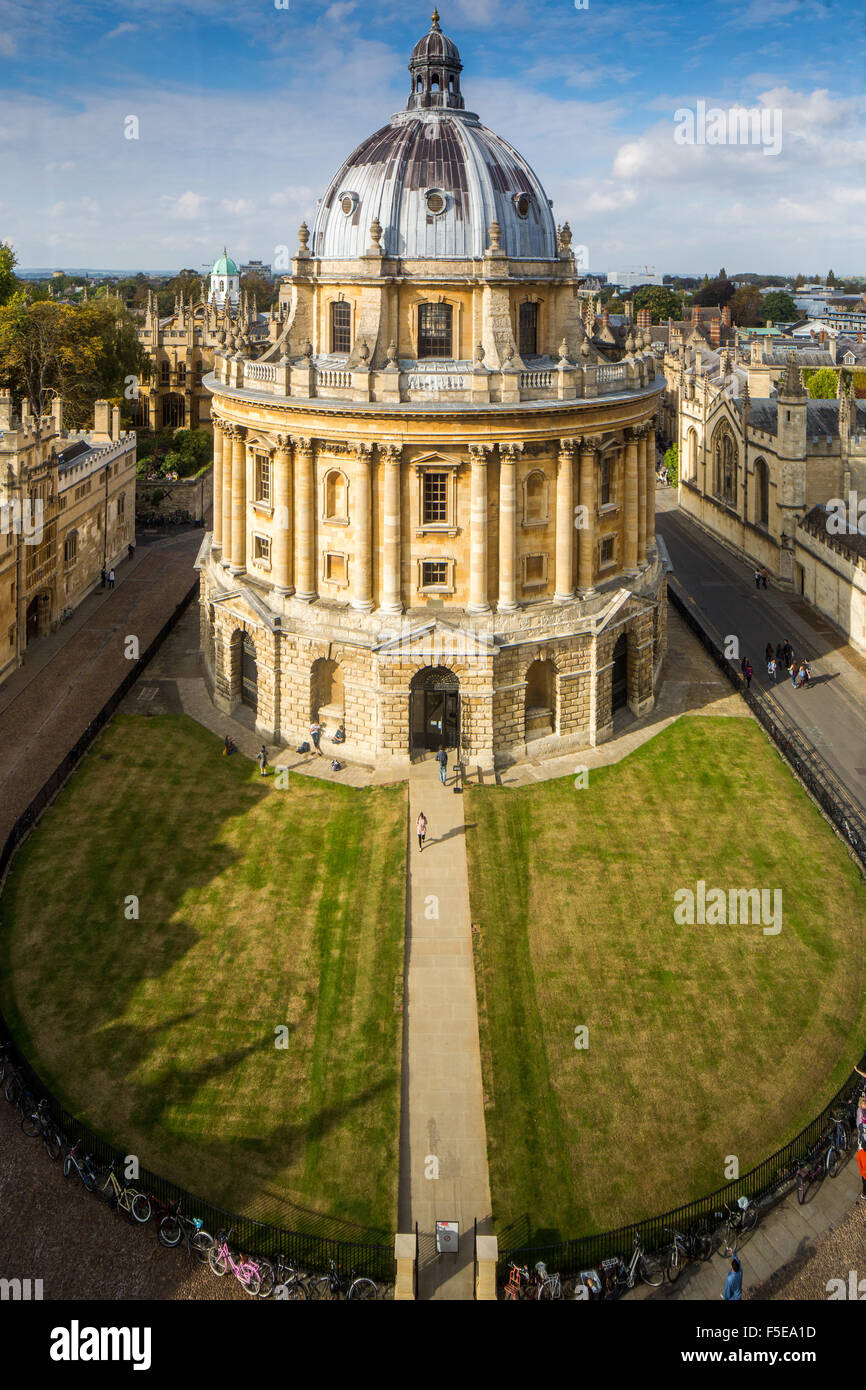 Radcliffe Camera, from St. Marys Church, Oxford, Oxfordshire, England, United Kingdom, Europe Stock Photohttps://www.alamy.com/image-license-details/?v=1https://www.alamy.com/stock-photo-radcliffe-camera-from-st-marys-church-oxford-oxfordshire-england-united-89440329.html
Radcliffe Camera, from St. Marys Church, Oxford, Oxfordshire, England, United Kingdom, Europe Stock Photohttps://www.alamy.com/image-license-details/?v=1https://www.alamy.com/stock-photo-radcliffe-camera-from-st-marys-church-oxford-oxfordshire-england-united-89440329.htmlRFF5EA1D–Radcliffe Camera, from St. Marys Church, Oxford, Oxfordshire, England, United Kingdom, Europe
 Newport News Virginia,Endview Plantation,visitors travel traveling tour tourist tourism landmark landmarks culture cultural,vacation group people pers Stock Photohttps://www.alamy.com/image-license-details/?v=1https://www.alamy.com/newport-news-virginiaendview-plantationvisitors-travel-traveling-tour-tourist-tourism-landmark-landmarks-culture-culturalvacation-group-people-pers-image490887436.html
Newport News Virginia,Endview Plantation,visitors travel traveling tour tourist tourism landmark landmarks culture cultural,vacation group people pers Stock Photohttps://www.alamy.com/image-license-details/?v=1https://www.alamy.com/newport-news-virginiaendview-plantationvisitors-travel-traveling-tour-tourist-tourism-landmark-landmarks-culture-culturalvacation-group-people-pers-image490887436.htmlRM2KEHRX4–Newport News Virginia,Endview Plantation,visitors travel traveling tour tourist tourism landmark landmarks culture cultural,vacation group people pers
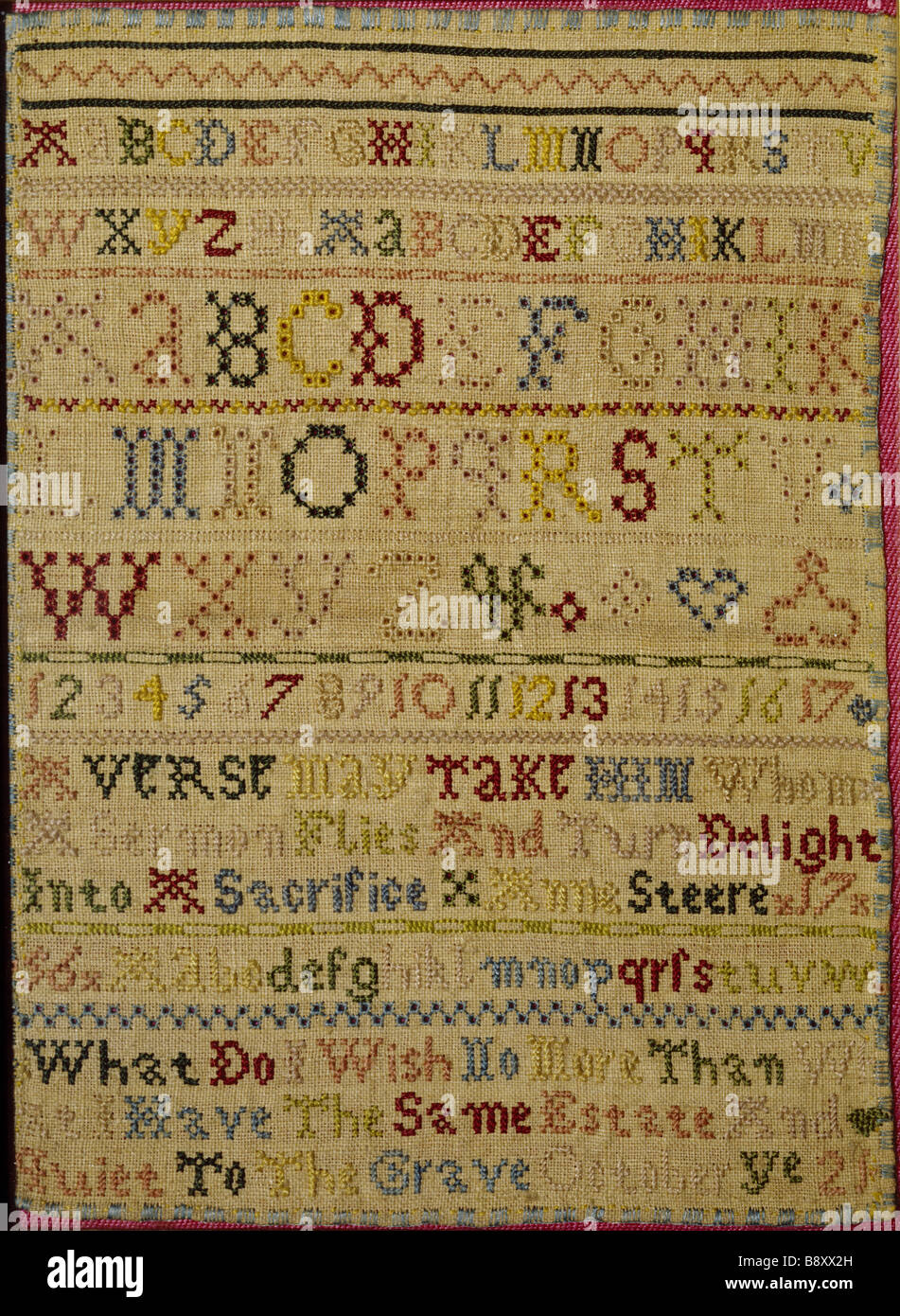 Montacute Stock Photohttps://www.alamy.com/image-license-details/?v=1https://www.alamy.com/stock-photo-montacute-22718825.html
Montacute Stock Photohttps://www.alamy.com/image-license-details/?v=1https://www.alamy.com/stock-photo-montacute-22718825.htmlRMB8XX2H–Montacute
 Experience history firsthand with a guided tour of Old Salem, North Carolina, where a woman in colonial attire brings the 1700s to life.USA Stock Photohttps://www.alamy.com/image-license-details/?v=1https://www.alamy.com/experience-history-firsthand-with-a-guided-tour-of-old-salem-north-image5521053.html
Experience history firsthand with a guided tour of Old Salem, North Carolina, where a woman in colonial attire brings the 1700s to life.USA Stock Photohttps://www.alamy.com/image-license-details/?v=1https://www.alamy.com/experience-history-firsthand-with-a-guided-tour-of-old-salem-north-image5521053.htmlRMAXRX9E–Experience history firsthand with a guided tour of Old Salem, North Carolina, where a woman in colonial attire brings the 1700s to life.USA
 'Instruction', c18th century. Artist: Unknown. Stock Photohttps://www.alamy.com/image-license-details/?v=1https://www.alamy.com/instruction-c18th-century-artist-unknown-image262780758.html
'Instruction', c18th century. Artist: Unknown. Stock Photohttps://www.alamy.com/image-license-details/?v=1https://www.alamy.com/instruction-c18th-century-artist-unknown-image262780758.htmlRMW7EKF2–'Instruction', c18th century. Artist: Unknown.
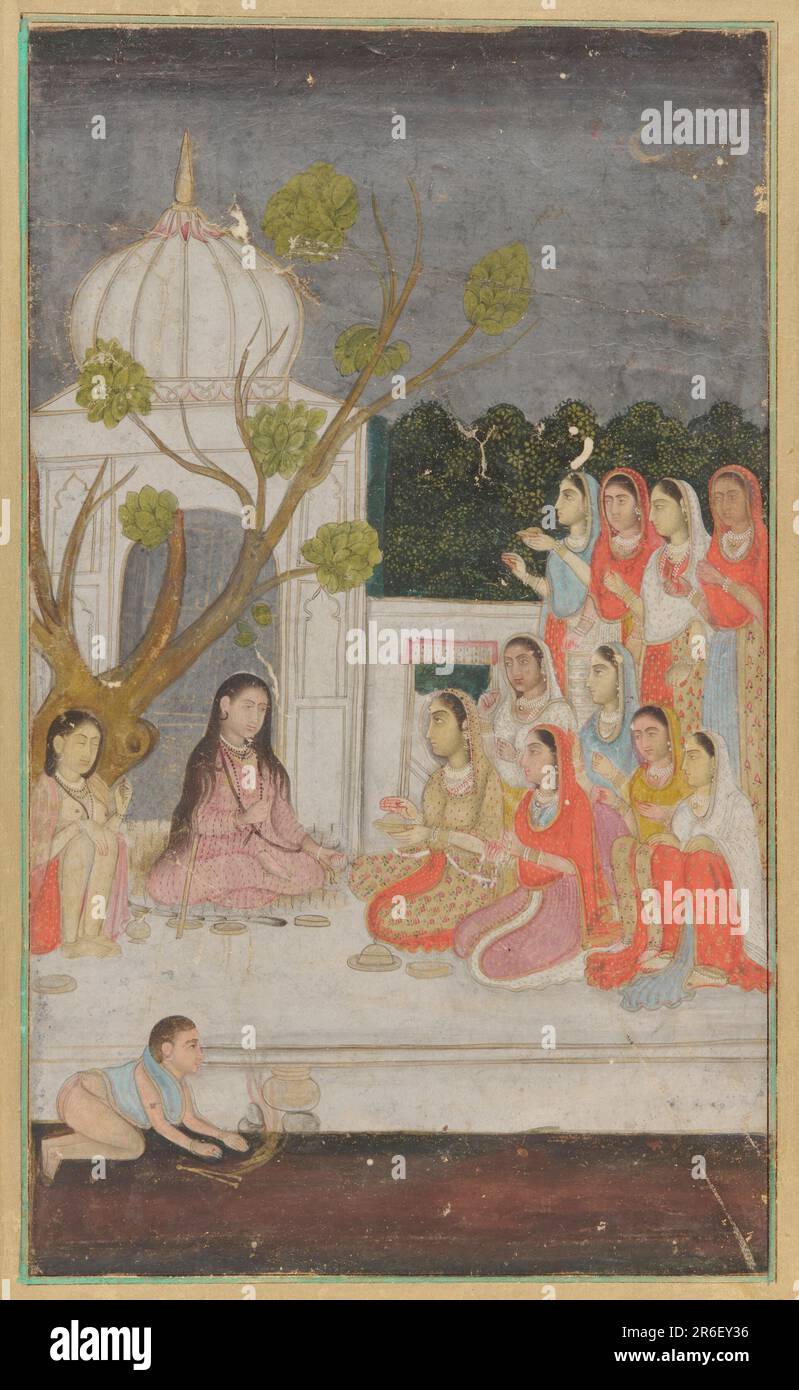 Fortune-telling; a group of women on a terrace at night. Date: 18th century. Origin: India. Period: Mughal dynasty. Color and gold on paper. Museum: Freer Gallery of Art and Arthur M. Sackler Gallery. Stock Photohttps://www.alamy.com/image-license-details/?v=1https://www.alamy.com/fortune-telling-a-group-of-women-on-a-terrace-at-night-date-18th-century-origin-india-period-mughal-dynasty-color-and-gold-on-paper-museum-freer-gallery-of-art-and-arthur-m-sackler-gallery-image554748298.html
Fortune-telling; a group of women on a terrace at night. Date: 18th century. Origin: India. Period: Mughal dynasty. Color and gold on paper. Museum: Freer Gallery of Art and Arthur M. Sackler Gallery. Stock Photohttps://www.alamy.com/image-license-details/?v=1https://www.alamy.com/fortune-telling-a-group-of-women-on-a-terrace-at-night-date-18th-century-origin-india-period-mughal-dynasty-color-and-gold-on-paper-museum-freer-gallery-of-art-and-arthur-m-sackler-gallery-image554748298.htmlRM2R6EY36–Fortune-telling; a group of women on a terrace at night. Date: 18th century. Origin: India. Period: Mughal dynasty. Color and gold on paper. Museum: Freer Gallery of Art and Arthur M. Sackler Gallery.
 Woman near a fenced-off flowering garden, late 18th century. Stock Photohttps://www.alamy.com/image-license-details/?v=1https://www.alamy.com/woman-near-a-fenced-off-flowering-garden-late-18th-century-image426151363.html
Woman near a fenced-off flowering garden, late 18th century. Stock Photohttps://www.alamy.com/image-license-details/?v=1https://www.alamy.com/woman-near-a-fenced-off-flowering-garden-late-18th-century-image426151363.htmlRM2FN8TBF–Woman near a fenced-off flowering garden, late 18th century.
 Newport News Virginia,Endview Plantation,visitors travel traveling tour tourist tourism landmark landmarks culture cultural,vacation group people pers Stock Photohttps://www.alamy.com/image-license-details/?v=1https://www.alamy.com/newport-news-virginiaendview-plantationvisitors-travel-traveling-tour-tourist-tourism-landmark-landmarks-culture-culturalvacation-group-people-pers-image490887439.html
Newport News Virginia,Endview Plantation,visitors travel traveling tour tourist tourism landmark landmarks culture cultural,vacation group people pers Stock Photohttps://www.alamy.com/image-license-details/?v=1https://www.alamy.com/newport-news-virginiaendview-plantationvisitors-travel-traveling-tour-tourist-tourism-landmark-landmarks-culture-culturalvacation-group-people-pers-image490887439.htmlRM2KEHRX7–Newport News Virginia,Endview Plantation,visitors travel traveling tour tourist tourism landmark landmarks culture cultural,vacation group people pers
 Black Monday or the Departure for School, 1790, (1919). Artist: John Jones Stock Photohttps://www.alamy.com/image-license-details/?v=1https://www.alamy.com/black-monday-or-the-departure-for-school-1790-1919-artist-john-jones-image262779749.html
Black Monday or the Departure for School, 1790, (1919). Artist: John Jones Stock Photohttps://www.alamy.com/image-license-details/?v=1https://www.alamy.com/black-monday-or-the-departure-for-school-1790-1919-artist-john-jones-image262779749.htmlRMW7EJ71–Black Monday or the Departure for School, 1790, (1919). Artist: John Jones
 A Lady and attendant on a terrace at evening, with three women musicians. Date: 18th century. Origin: India. Period: Mughal dynasty. Color and gold on paper. Museum: Freer Gallery of Art and Arthur M. Sackler Gallery. Stock Photohttps://www.alamy.com/image-license-details/?v=1https://www.alamy.com/a-lady-and-attendant-on-a-terrace-at-evening-with-three-women-musicians-date-18th-century-origin-india-period-mughal-dynasty-color-and-gold-on-paper-museum-freer-gallery-of-art-and-arthur-m-sackler-gallery-image554751197.html
A Lady and attendant on a terrace at evening, with three women musicians. Date: 18th century. Origin: India. Period: Mughal dynasty. Color and gold on paper. Museum: Freer Gallery of Art and Arthur M. Sackler Gallery. Stock Photohttps://www.alamy.com/image-license-details/?v=1https://www.alamy.com/a-lady-and-attendant-on-a-terrace-at-evening-with-three-women-musicians-date-18th-century-origin-india-period-mughal-dynasty-color-and-gold-on-paper-museum-freer-gallery-of-art-and-arthur-m-sackler-gallery-image554751197.htmlRM2R6F2PN–A Lady and attendant on a terrace at evening, with three women musicians. Date: 18th century. Origin: India. Period: Mughal dynasty. Color and gold on paper. Museum: Freer Gallery of Art and Arthur M. Sackler Gallery.
 Dulce Domum or the Return from School, 1790, (1919). Artist: William Redmore Bigg Stock Photohttps://www.alamy.com/image-license-details/?v=1https://www.alamy.com/dulce-domum-or-the-return-from-school-1790-1919-artist-william-redmore-bigg-image262779767.html
Dulce Domum or the Return from School, 1790, (1919). Artist: William Redmore Bigg Stock Photohttps://www.alamy.com/image-license-details/?v=1https://www.alamy.com/dulce-domum-or-the-return-from-school-1790-1919-artist-william-redmore-bigg-image262779767.htmlRMW7EJ7K–Dulce Domum or the Return from School, 1790, (1919). Artist: William Redmore Bigg
 'Grown Ladies Taught to Dance', 1750. Artist: Rennoldson Stock Photohttps://www.alamy.com/image-license-details/?v=1https://www.alamy.com/grown-ladies-taught-to-dance-1750-artist-rennoldson-image262746378.html
'Grown Ladies Taught to Dance', 1750. Artist: Rennoldson Stock Photohttps://www.alamy.com/image-license-details/?v=1https://www.alamy.com/grown-ladies-taught-to-dance-1750-artist-rennoldson-image262746378.htmlRMW7D3K6–'Grown Ladies Taught to Dance', 1750. Artist: Rennoldson
 Marylebone Old Manor House: Garden Front, 1791, (1923). Artist: Michael Angelo Rooker Stock Photohttps://www.alamy.com/image-license-details/?v=1https://www.alamy.com/marylebone-old-manor-house-garden-front-1791-1923-artist-michael-angelo-rooker-image262779990.html
Marylebone Old Manor House: Garden Front, 1791, (1923). Artist: Michael Angelo Rooker Stock Photohttps://www.alamy.com/image-license-details/?v=1https://www.alamy.com/marylebone-old-manor-house-garden-front-1791-1923-artist-michael-angelo-rooker-image262779990.htmlRMW7EJFJ–Marylebone Old Manor House: Garden Front, 1791, (1923). Artist: Michael Angelo Rooker
RM2FN8RT8–Icon , Late 17th-early 18th century. Triptych of distemper and gesso on wood. Left panel: Crucifixion; Saints; St. George and the dragon. Central panel: Madonna and child flanked by archangels. Right panel: Christ with Adam and Eve; Saints in two lower registers.
 'The Governess', 1739 (1885).Artist: Francois Bernard Lepicie Stock Photohttps://www.alamy.com/image-license-details/?v=1https://www.alamy.com/the-governess-1739-1885artist-francois-bernard-lepicie-image262755669.html
'The Governess', 1739 (1885).Artist: Francois Bernard Lepicie Stock Photohttps://www.alamy.com/image-license-details/?v=1https://www.alamy.com/the-governess-1739-1885artist-francois-bernard-lepicie-image262755669.htmlRMW7DFF1–'The Governess', 1739 (1885).Artist: Francois Bernard Lepicie
!['King's College', 1898. Kings College, Aberdeen, independent university founded in 1495 now an integral part of the University of Aberdeen, subject to renovation and rebuilding in the 18th and 19th centuries. From "Our Own Country, Volume III". [Cassell and Company, Limited, London, Paris & Melbourne, 1898] Stock Photo 'King's College', 1898. Kings College, Aberdeen, independent university founded in 1495 now an integral part of the University of Aberdeen, subject to renovation and rebuilding in the 18th and 19th centuries. From "Our Own Country, Volume III". [Cassell and Company, Limited, London, Paris & Melbourne, 1898] Stock Photo](https://c8.alamy.com/comp/2A41WGH/kings-college-1898-kings-college-aberdeen-independent-university-founded-in-1495-now-an-integral-part-of-the-university-of-aberdeen-subject-to-renovation-and-rebuilding-in-the-18th-and-19th-centuries-from-quotour-own-country-volume-iiiquot-cassell-and-company-limited-london-paris-amp-melbourne-1898-2A41WGH.jpg) 'King's College', 1898. Kings College, Aberdeen, independent university founded in 1495 now an integral part of the University of Aberdeen, subject to renovation and rebuilding in the 18th and 19th centuries. From "Our Own Country, Volume III". [Cassell and Company, Limited, London, Paris & Melbourne, 1898] Stock Photohttps://www.alamy.com/image-license-details/?v=1https://www.alamy.com/kings-college-1898-kings-college-aberdeen-independent-university-founded-in-1495-now-an-integral-part-of-the-university-of-aberdeen-subject-to-renovation-and-rebuilding-in-the-18th-and-19th-centuries-from-quotour-own-country-volume-iiiquot-cassell-and-company-limited-london-paris-amp-melbourne-1898-image329497633.html
'King's College', 1898. Kings College, Aberdeen, independent university founded in 1495 now an integral part of the University of Aberdeen, subject to renovation and rebuilding in the 18th and 19th centuries. From "Our Own Country, Volume III". [Cassell and Company, Limited, London, Paris & Melbourne, 1898] Stock Photohttps://www.alamy.com/image-license-details/?v=1https://www.alamy.com/kings-college-1898-kings-college-aberdeen-independent-university-founded-in-1495-now-an-integral-part-of-the-university-of-aberdeen-subject-to-renovation-and-rebuilding-in-the-18th-and-19th-centuries-from-quotour-own-country-volume-iiiquot-cassell-and-company-limited-london-paris-amp-melbourne-1898-image329497633.htmlRM2A41WGH–'King's College', 1898. Kings College, Aberdeen, independent university founded in 1495 now an integral part of the University of Aberdeen, subject to renovation and rebuilding in the 18th and 19th centuries. From "Our Own Country, Volume III". [Cassell and Company, Limited, London, Paris & Melbourne, 1898]
 Newport News Virginia,Endview Plantation,visitors travel traveling tour tourist tourism landmark landmarks culture cultural,vacation group people pers Stock Photohttps://www.alamy.com/image-license-details/?v=1https://www.alamy.com/newport-news-virginiaendview-plantationvisitors-travel-traveling-tour-tourist-tourism-landmark-landmarks-culture-culturalvacation-group-people-pers-image490887453.html
Newport News Virginia,Endview Plantation,visitors travel traveling tour tourist tourism landmark landmarks culture cultural,vacation group people pers Stock Photohttps://www.alamy.com/image-license-details/?v=1https://www.alamy.com/newport-news-virginiaendview-plantationvisitors-travel-traveling-tour-tourist-tourism-landmark-landmarks-culture-culturalvacation-group-people-pers-image490887453.htmlRM2KEHRXN–Newport News Virginia,Endview Plantation,visitors travel traveling tour tourist tourism landmark landmarks culture cultural,vacation group people pers
 A group of women in a garden, entertaining themselves with music and dancing. Origin: India. Date: mid 18th century. Color and gold on paper. Museum: Freer Gallery of Art and Arthur M. Sackler Gallery. Stock Photohttps://www.alamy.com/image-license-details/?v=1https://www.alamy.com/a-group-of-women-in-a-garden-entertaining-themselves-with-music-and-dancing-origin-india-date-mid-18th-century-color-and-gold-on-paper-museum-freer-gallery-of-art-and-arthur-m-sackler-gallery-image554750427.html
A group of women in a garden, entertaining themselves with music and dancing. Origin: India. Date: mid 18th century. Color and gold on paper. Museum: Freer Gallery of Art and Arthur M. Sackler Gallery. Stock Photohttps://www.alamy.com/image-license-details/?v=1https://www.alamy.com/a-group-of-women-in-a-garden-entertaining-themselves-with-music-and-dancing-origin-india-date-mid-18th-century-color-and-gold-on-paper-museum-freer-gallery-of-art-and-arthur-m-sackler-gallery-image554750427.htmlRM2R6F1R7–A group of women in a garden, entertaining themselves with music and dancing. Origin: India. Date: mid 18th century. Color and gold on paper. Museum: Freer Gallery of Art and Arthur M. Sackler Gallery.
 A group of women, bathing, 18th century. Stock Photohttps://www.alamy.com/image-license-details/?v=1https://www.alamy.com/a-group-of-women-bathing-18th-century-image426152005.html
A group of women, bathing, 18th century. Stock Photohttps://www.alamy.com/image-license-details/?v=1https://www.alamy.com/a-group-of-women-bathing-18th-century-image426152005.htmlRM2FN8W6D–A group of women, bathing, 18th century.
 'The Young Governess', c1735-1736. Artist: Jean-Simeon Chardin. Stock Photohttps://www.alamy.com/image-license-details/?v=1https://www.alamy.com/the-young-governess-c1735-1736-artist-jean-simeon-chardin-image186141666.html
'The Young Governess', c1735-1736. Artist: Jean-Simeon Chardin. Stock Photohttps://www.alamy.com/image-license-details/?v=1https://www.alamy.com/the-young-governess-c1735-1736-artist-jean-simeon-chardin-image186141666.htmlRMMPRDGJ–'The Young Governess', c1735-1736. Artist: Jean-Simeon Chardin.
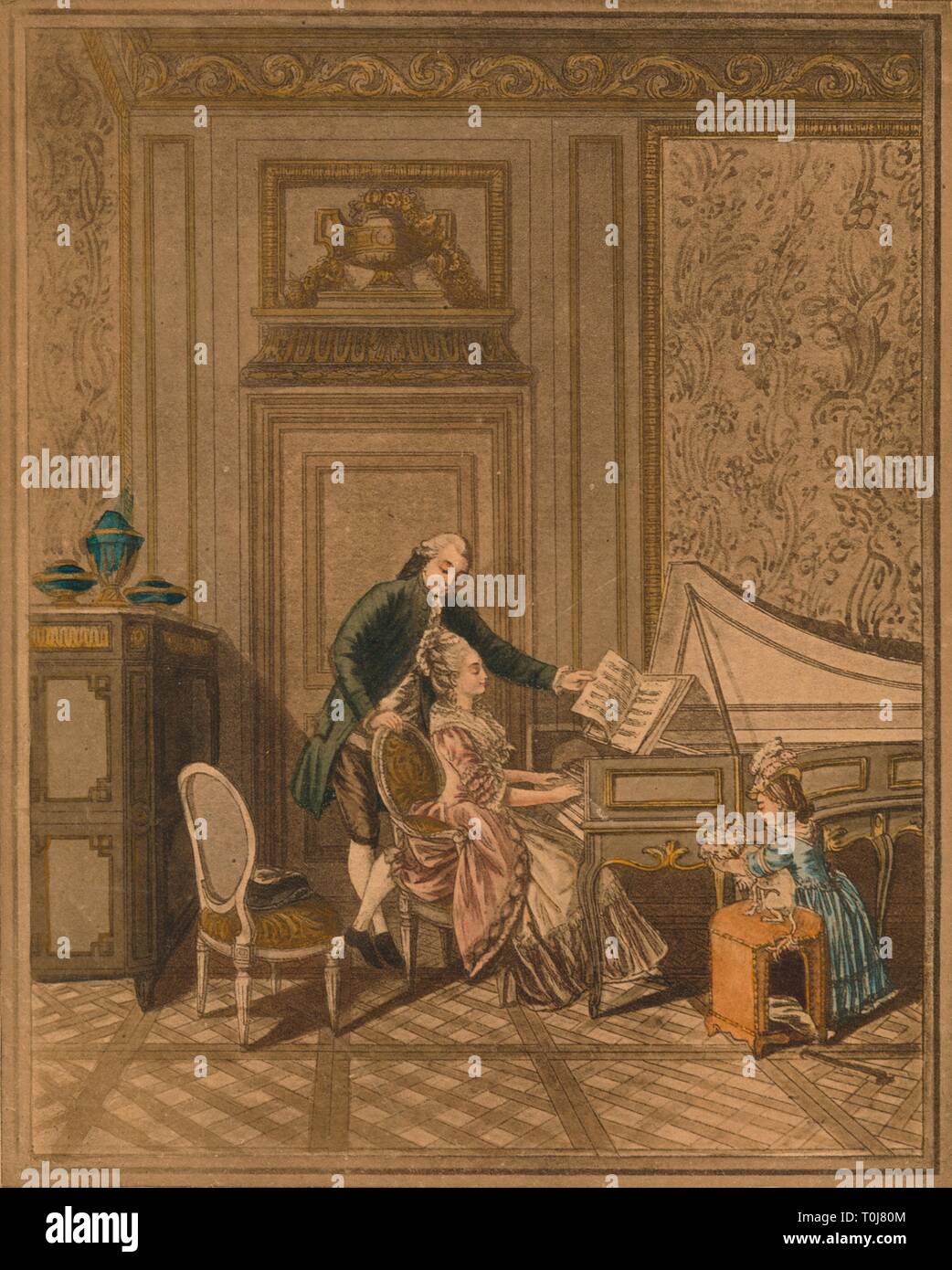 'Le Lecon de Clavecin'. Creator: Massard. Stock Photohttps://www.alamy.com/image-license-details/?v=1https://www.alamy.com/le-lecon-de-clavecin-creator-massard-image241346580.html
'Le Lecon de Clavecin'. Creator: Massard. Stock Photohttps://www.alamy.com/image-license-details/?v=1https://www.alamy.com/le-lecon-de-clavecin-creator-massard-image241346580.htmlRMT0J80M–'Le Lecon de Clavecin'. Creator: Massard.
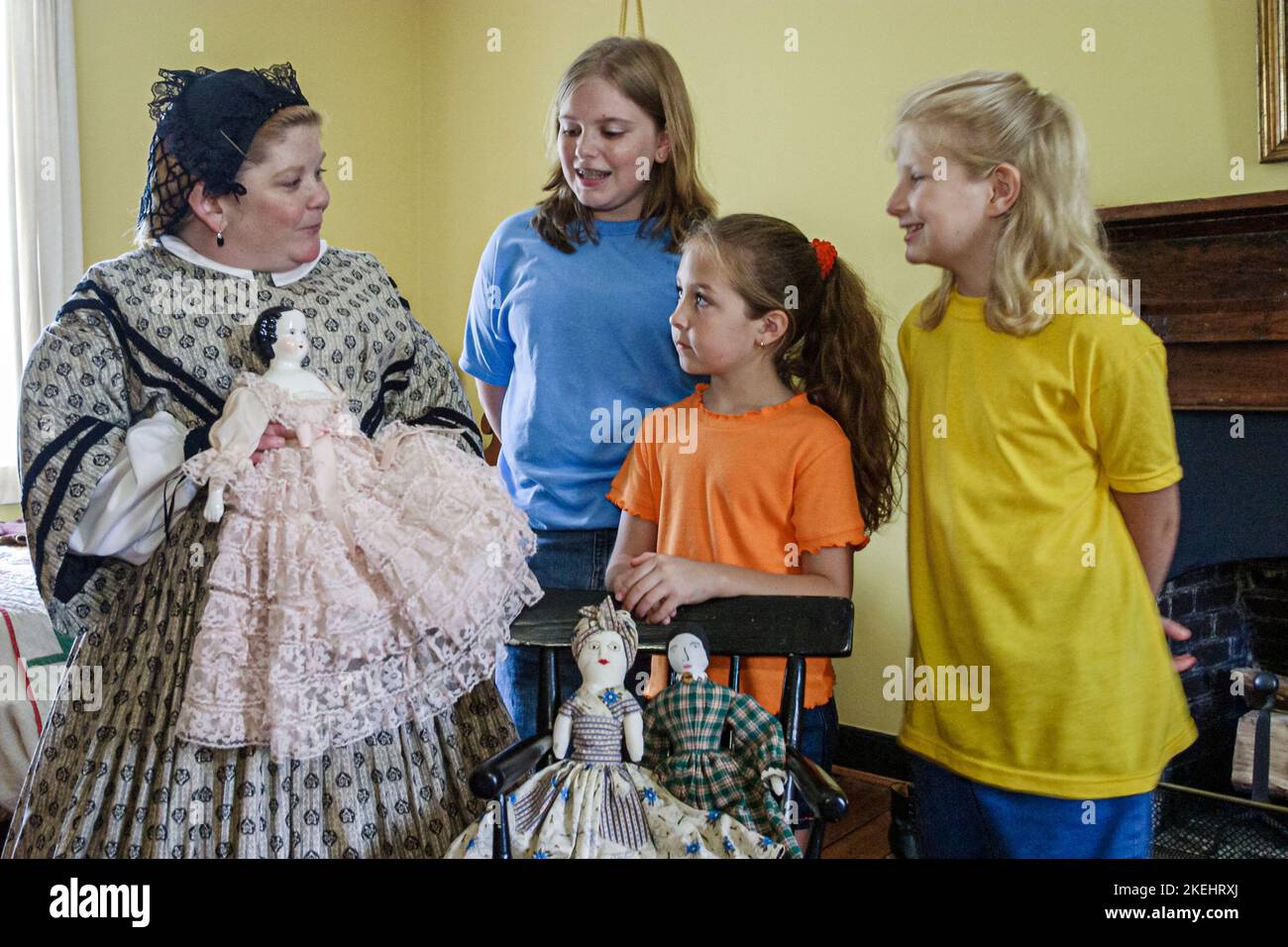 Newport News Virginia,Endview Plantation,visitors travel traveling tour tourist tourism landmark landmarks culture cultural,vacation group people pers Stock Photohttps://www.alamy.com/image-license-details/?v=1https://www.alamy.com/newport-news-virginiaendview-plantationvisitors-travel-traveling-tour-tourist-tourism-landmark-landmarks-culture-culturalvacation-group-people-pers-image490887450.html
Newport News Virginia,Endview Plantation,visitors travel traveling tour tourist tourism landmark landmarks culture cultural,vacation group people pers Stock Photohttps://www.alamy.com/image-license-details/?v=1https://www.alamy.com/newport-news-virginiaendview-plantationvisitors-travel-traveling-tour-tourist-tourism-landmark-landmarks-culture-culturalvacation-group-people-pers-image490887450.htmlRM2KEHRXJ–Newport News Virginia,Endview Plantation,visitors travel traveling tour tourist tourism landmark landmarks culture cultural,vacation group people pers
 'Say Please (Dites donc s'il vous plait)', c1780, (1911). Artist: Jean-Honore Fragonard. Stock Photohttps://www.alamy.com/image-license-details/?v=1https://www.alamy.com/say-please-dites-donc-sil-vous-plait-c1780-1911-artist-jean-honore-fragonard-image186131542.html
'Say Please (Dites donc s'il vous plait)', c1780, (1911). Artist: Jean-Honore Fragonard. Stock Photohttps://www.alamy.com/image-license-details/?v=1https://www.alamy.com/say-please-dites-donc-sil-vous-plait-c1780-1911-artist-jean-honore-fragonard-image186131542.htmlRMMPR0K2–'Say Please (Dites donc s'il vous plait)', c1780, (1911). Artist: Jean-Honore Fragonard.
 Women and children seated in a parlor, 18th century. A maid shows Mrs. Sandford the note of debt stolen by the miser Mr. Skinpenny. O God, thou knowest all things, how wonderfully hast Thou brought my innocence and this man's wickedness to light! Copperplate engraving by William Blake after an illustration by Daniel Nikolaus Chodowiecki from Mary Wollstonecraft's translation of Christian Gotthilf Salzmann's Elements of Morality, London, 1791. Stock Photohttps://www.alamy.com/image-license-details/?v=1https://www.alamy.com/women-and-children-seated-in-a-parlor-18th-century-a-maid-shows-mrs-sandford-the-note-of-debt-stolen-by-the-miser-mr-skinpenny-o-god-thou-knowest-all-things-how-wonderfully-hast-thou-brought-my-innocence-and-this-mans-wickedness-to-light!-copperplate-engraving-by-william-blake-after-an-illustration-by-daniel-nikolaus-chodowiecki-from-mary-wollstonecrafts-translation-of-christian-gotthilf-salzmanns-elements-of-morality-london-1791-image571822148.html
Women and children seated in a parlor, 18th century. A maid shows Mrs. Sandford the note of debt stolen by the miser Mr. Skinpenny. O God, thou knowest all things, how wonderfully hast Thou brought my innocence and this man's wickedness to light! Copperplate engraving by William Blake after an illustration by Daniel Nikolaus Chodowiecki from Mary Wollstonecraft's translation of Christian Gotthilf Salzmann's Elements of Morality, London, 1791. Stock Photohttps://www.alamy.com/image-license-details/?v=1https://www.alamy.com/women-and-children-seated-in-a-parlor-18th-century-a-maid-shows-mrs-sandford-the-note-of-debt-stolen-by-the-miser-mr-skinpenny-o-god-thou-knowest-all-things-how-wonderfully-hast-thou-brought-my-innocence-and-this-mans-wickedness-to-light!-copperplate-engraving-by-william-blake-after-an-illustration-by-daniel-nikolaus-chodowiecki-from-mary-wollstonecrafts-translation-of-christian-gotthilf-salzmanns-elements-of-morality-london-1791-image571822148.htmlRM2T68MYG–Women and children seated in a parlor, 18th century. A maid shows Mrs. Sandford the note of debt stolen by the miser Mr. Skinpenny. O God, thou knowest all things, how wonderfully hast Thou brought my innocence and this man's wickedness to light! Copperplate engraving by William Blake after an illustration by Daniel Nikolaus Chodowiecki from Mary Wollstonecraft's translation of Christian Gotthilf Salzmann's Elements of Morality, London, 1791.
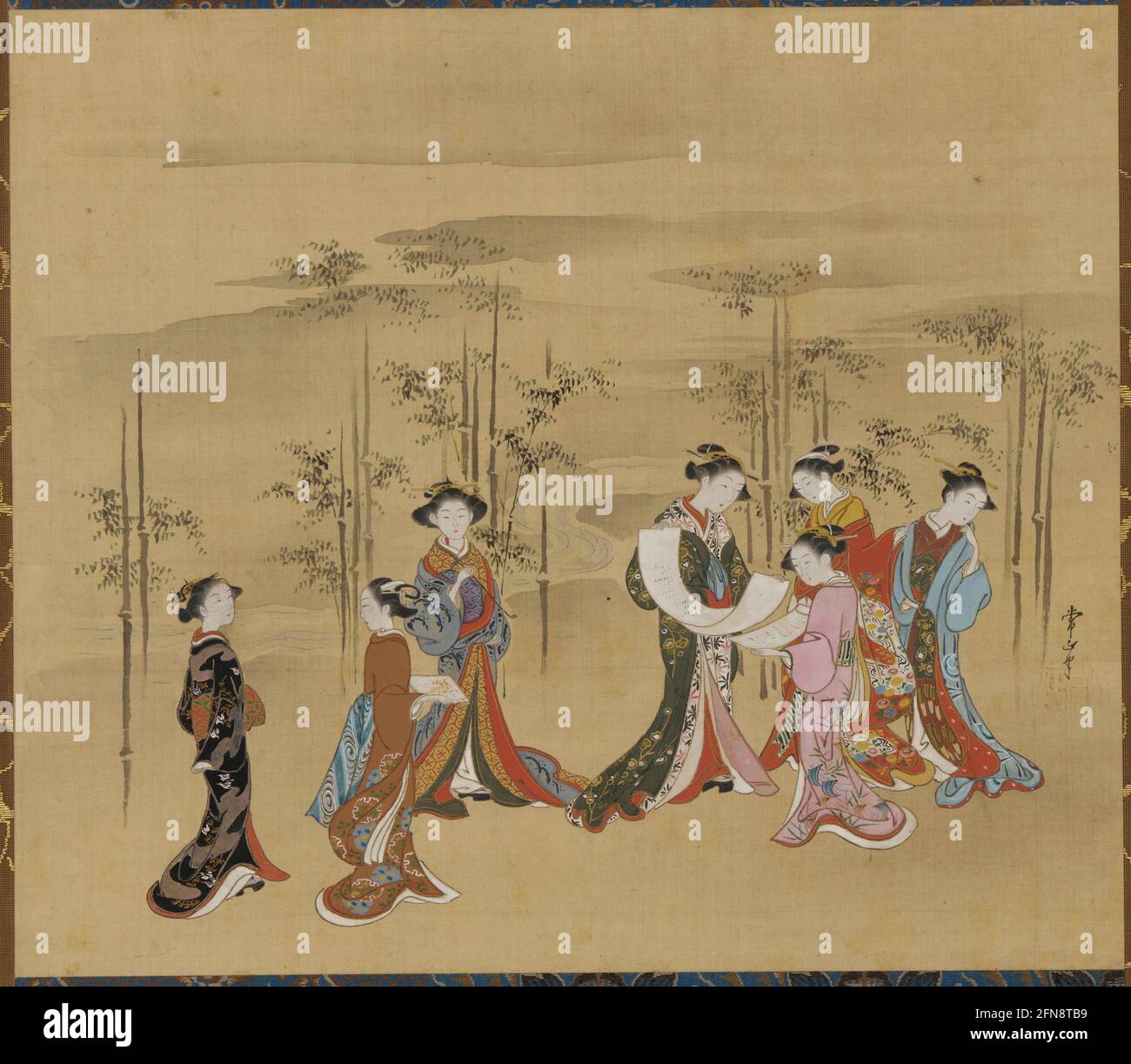 Seven young women in a bamboo grove, 18th century. Stock Photohttps://www.alamy.com/image-license-details/?v=1https://www.alamy.com/seven-young-women-in-a-bamboo-grove-18th-century-image426151357.html
Seven young women in a bamboo grove, 18th century. Stock Photohttps://www.alamy.com/image-license-details/?v=1https://www.alamy.com/seven-young-women-in-a-bamboo-grove-18th-century-image426151357.htmlRM2FN8TB9–Seven young women in a bamboo grove, 18th century.
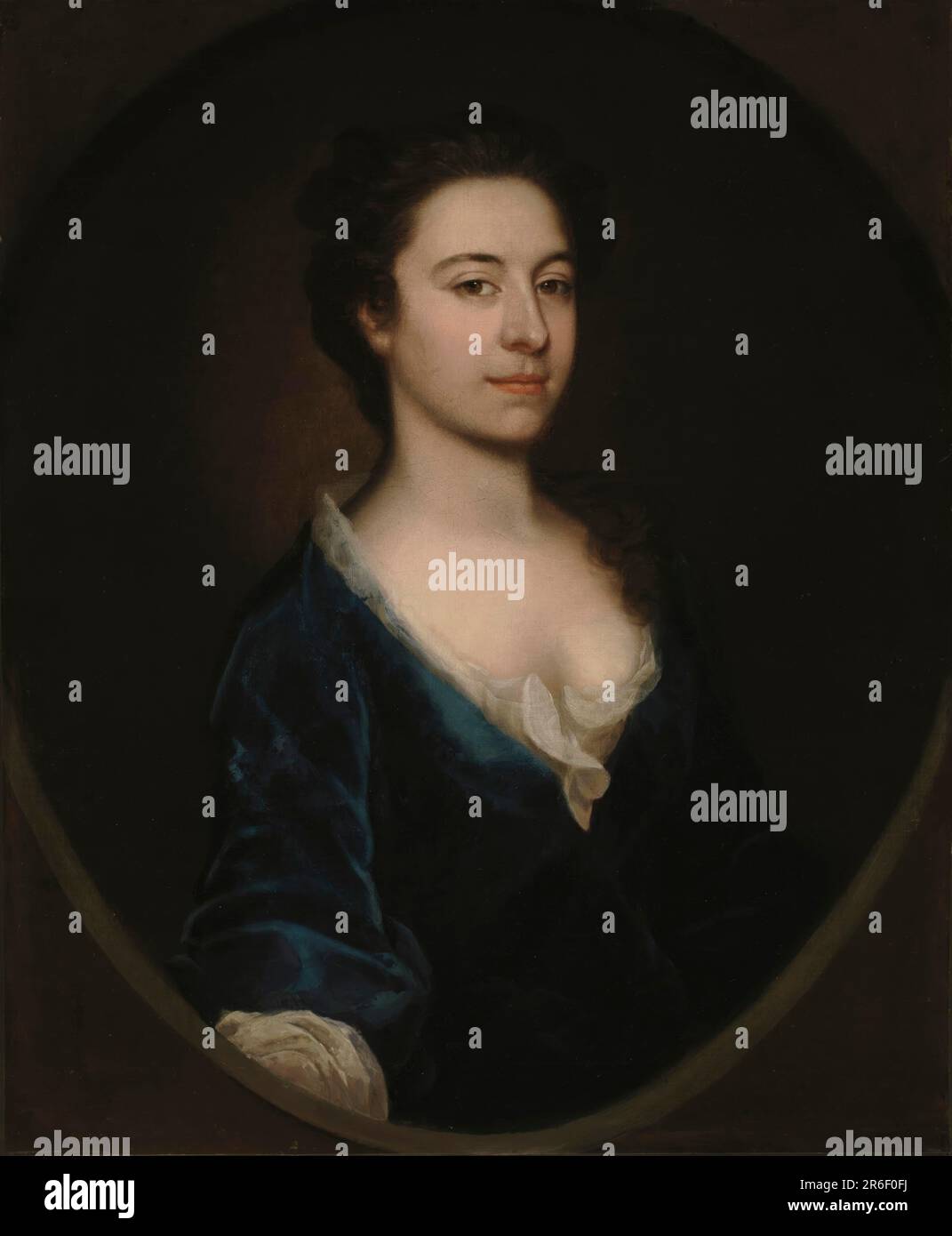 Mrs. Price. oil on canvas. Date: 18th century. Museum: Smithsonian American Art Museum. Stock Photohttps://www.alamy.com/image-license-details/?v=1https://www.alamy.com/mrs-price-oil-on-canvas-date-18th-century-museum-smithsonian-american-art-museum-image554749430.html
Mrs. Price. oil on canvas. Date: 18th century. Museum: Smithsonian American Art Museum. Stock Photohttps://www.alamy.com/image-license-details/?v=1https://www.alamy.com/mrs-price-oil-on-canvas-date-18th-century-museum-smithsonian-american-art-museum-image554749430.htmlRM2R6F0FJ–Mrs. Price. oil on canvas. Date: 18th century. Museum: Smithsonian American Art Museum.
 Fortune-telling; a group of women on a terrace at night, 18th century. Stock Photohttps://www.alamy.com/image-license-details/?v=1https://www.alamy.com/fortune-telling-a-group-of-women-on-a-terrace-at-night-18th-century-image426152044.html
Fortune-telling; a group of women on a terrace at night, 18th century. Stock Photohttps://www.alamy.com/image-license-details/?v=1https://www.alamy.com/fortune-telling-a-group-of-women-on-a-terrace-at-night-18th-century-image426152044.htmlRM2FN8W7T–Fortune-telling; a group of women on a terrace at night, 18th century.
 Portrait of Mrs. Elizabeth Boucher. oil on canvas. Date: 18th century. Museum: Smithsonian American Art Museum. Stock Photohttps://www.alamy.com/image-license-details/?v=1https://www.alamy.com/portrait-of-mrs-elizabeth-boucher-oil-on-canvas-date-18th-century-museum-smithsonian-american-art-museum-image554748808.html
Portrait of Mrs. Elizabeth Boucher. oil on canvas. Date: 18th century. Museum: Smithsonian American Art Museum. Stock Photohttps://www.alamy.com/image-license-details/?v=1https://www.alamy.com/portrait-of-mrs-elizabeth-boucher-oil-on-canvas-date-18th-century-museum-smithsonian-american-art-museum-image554748808.htmlRM2R6EYNC–Portrait of Mrs. Elizabeth Boucher. oil on canvas. Date: 18th century. Museum: Smithsonian American Art Museum.
 A Lady and attendant on a terrace at evening, with three women musicians, 18th century. Stock Photohttps://www.alamy.com/image-license-details/?v=1https://www.alamy.com/a-lady-and-attendant-on-a-terrace-at-evening-with-three-women-musicians-18th-century-image426151990.html
A Lady and attendant on a terrace at evening, with three women musicians, 18th century. Stock Photohttps://www.alamy.com/image-license-details/?v=1https://www.alamy.com/a-lady-and-attendant-on-a-terrace-at-evening-with-three-women-musicians-18th-century-image426151990.htmlRM2FN8W5X–A Lady and attendant on a terrace at evening, with three women musicians, 18th century.
 Mrs. Lloyd. oil on canvas. Date: 18th century. Museum: Smithsonian American Art Museum. Stock Photohttps://www.alamy.com/image-license-details/?v=1https://www.alamy.com/mrs-lloyd-oil-on-canvas-date-18th-century-museum-smithsonian-american-art-museum-image554751338.html
Mrs. Lloyd. oil on canvas. Date: 18th century. Museum: Smithsonian American Art Museum. Stock Photohttps://www.alamy.com/image-license-details/?v=1https://www.alamy.com/mrs-lloyd-oil-on-canvas-date-18th-century-museum-smithsonian-american-art-museum-image554751338.htmlRM2R6F2YP–Mrs. Lloyd. oil on canvas. Date: 18th century. Museum: Smithsonian American Art Museum.
 A group of women in a garden, entertaining themselves with music and dancing, mid 18th century. Stock Photohttps://www.alamy.com/image-license-details/?v=1https://www.alamy.com/a-group-of-women-in-a-garden-entertaining-themselves-with-music-and-dancing-mid-18th-century-image426152226.html
A group of women in a garden, entertaining themselves with music and dancing, mid 18th century. Stock Photohttps://www.alamy.com/image-license-details/?v=1https://www.alamy.com/a-group-of-women-in-a-garden-entertaining-themselves-with-music-and-dancing-mid-18th-century-image426152226.htmlRM2FN8WEA–A group of women in a garden, entertaining themselves with music and dancing, mid 18th century.
 Woman Taken in Adultery. oil on canvas. Date: 18th century. Museum: Smithsonian American Art Museum. Stock Photohttps://www.alamy.com/image-license-details/?v=1https://www.alamy.com/woman-taken-in-adultery-oil-on-canvas-date-18th-century-museum-smithsonian-american-art-museum-image554746401.html
Woman Taken in Adultery. oil on canvas. Date: 18th century. Museum: Smithsonian American Art Museum. Stock Photohttps://www.alamy.com/image-license-details/?v=1https://www.alamy.com/woman-taken-in-adultery-oil-on-canvas-date-18th-century-museum-smithsonian-american-art-museum-image554746401.htmlRM2R6ETKD–Woman Taken in Adultery. oil on canvas. Date: 18th century. Museum: Smithsonian American Art Museum.
 Education.n.d. Stock Photohttps://www.alamy.com/image-license-details/?v=1https://www.alamy.com/educationnd-image349000875.html
Education.n.d. Stock Photohttps://www.alamy.com/image-license-details/?v=1https://www.alamy.com/educationnd-image349000875.htmlRM2B7PA4Y–Education.n.d.
 Standing figure of a girl. Date: 18th century. Origin: Japan. Period: Edo period. Color and ink on paper. Museum: Freer Gallery of Art and Arthur M. Sackler Gallery. Stock Photohttps://www.alamy.com/image-license-details/?v=1https://www.alamy.com/standing-figure-of-a-girl-date-18th-century-origin-japan-period-edo-period-color-and-ink-on-paper-museum-freer-gallery-of-art-and-arthur-m-sackler-gallery-image554750946.html
Standing figure of a girl. Date: 18th century. Origin: Japan. Period: Edo period. Color and ink on paper. Museum: Freer Gallery of Art and Arthur M. Sackler Gallery. Stock Photohttps://www.alamy.com/image-license-details/?v=1https://www.alamy.com/standing-figure-of-a-girl-date-18th-century-origin-japan-period-edo-period-color-and-ink-on-paper-museum-freer-gallery-of-art-and-arthur-m-sackler-gallery-image554750946.htmlRM2R6F2DP–Standing figure of a girl. Date: 18th century. Origin: Japan. Period: Edo period. Color and ink on paper. Museum: Freer Gallery of Art and Arthur M. Sackler Gallery.
 The Education (L'Education): in a forest, to right an old satyr instructor holding a wand, teaching a group of children, to the left a merchant of orvietan trying to attract spectators with his act, from 'The lives of satyrs' (La vie des satyres), ca. 1700-1720. Stock Photohttps://www.alamy.com/image-license-details/?v=1https://www.alamy.com/the-education-leducation-in-a-forest-to-right-an-old-satyr-instructor-holding-a-wand-teaching-a-group-of-children-to-the-left-a-merchant-of-orvietan-trying-to-attract-spectators-with-his-act-from-the-lives-of-satyrs-la-vie-des-satyres-ca-1700-1720-image349000886.html
The Education (L'Education): in a forest, to right an old satyr instructor holding a wand, teaching a group of children, to the left a merchant of orvietan trying to attract spectators with his act, from 'The lives of satyrs' (La vie des satyres), ca. 1700-1720. Stock Photohttps://www.alamy.com/image-license-details/?v=1https://www.alamy.com/the-education-leducation-in-a-forest-to-right-an-old-satyr-instructor-holding-a-wand-teaching-a-group-of-children-to-the-left-a-merchant-of-orvietan-trying-to-attract-spectators-with-his-act-from-the-lives-of-satyrs-la-vie-des-satyres-ca-1700-1720-image349000886.htmlRM2B7PA5A–The Education (L'Education): in a forest, to right an old satyr instructor holding a wand, teaching a group of children, to the left a merchant of orvietan trying to attract spectators with his act, from 'The lives of satyrs' (La vie des satyres), ca. 1700-1720.
 'Instruction', c18th century. Artist: Unknown. Stock Photohttps://www.alamy.com/image-license-details/?v=1https://www.alamy.com/stock-photo-instruction-c18th-century-artist-unknown-135268650.html
'Instruction', c18th century. Artist: Unknown. Stock Photohttps://www.alamy.com/image-license-details/?v=1https://www.alamy.com/stock-photo-instruction-c18th-century-artist-unknown-135268650.htmlRMHT20F6–'Instruction', c18th century. Artist: Unknown.
 Portrait of Mrs. Elizabeth Boucher, 18th century. Stock Photohttps://www.alamy.com/image-license-details/?v=1https://www.alamy.com/portrait-of-mrs-elizabeth-boucher-18th-century-image418826194.html
Portrait of Mrs. Elizabeth Boucher, 18th century. Stock Photohttps://www.alamy.com/image-license-details/?v=1https://www.alamy.com/portrait-of-mrs-elizabeth-boucher-18th-century-image418826194.htmlRM2F9B52A–Portrait of Mrs. Elizabeth Boucher, 18th century.
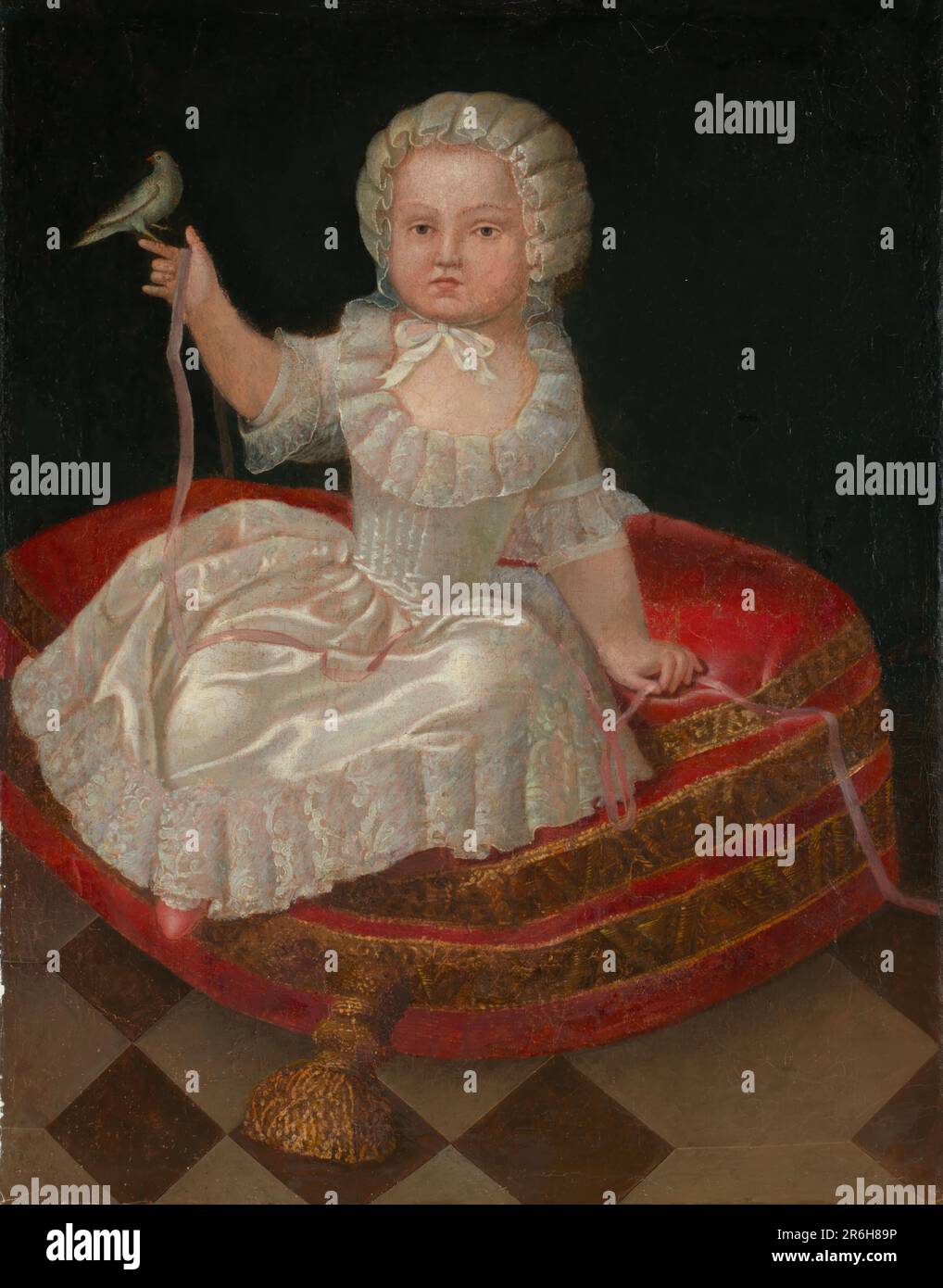 Girl on a Hassock. oil on canvas. Date: 18th century. Museum: Smithsonian American Art Museum. Stock Photohttps://www.alamy.com/image-license-details/?v=1https://www.alamy.com/girl-on-a-hassock-oil-on-canvas-date-18th-century-museum-smithsonian-american-art-museum-image554799442.html
Girl on a Hassock. oil on canvas. Date: 18th century. Museum: Smithsonian American Art Museum. Stock Photohttps://www.alamy.com/image-license-details/?v=1https://www.alamy.com/girl-on-a-hassock-oil-on-canvas-date-18th-century-museum-smithsonian-american-art-museum-image554799442.htmlRM2R6H89P–Girl on a Hassock. oil on canvas. Date: 18th century. Museum: Smithsonian American Art Museum.
 Mrs. Price, 18th century. Stock Photohttps://www.alamy.com/image-license-details/?v=1https://www.alamy.com/mrs-price-18th-century-image418814039.html
Mrs. Price, 18th century. Stock Photohttps://www.alamy.com/image-license-details/?v=1https://www.alamy.com/mrs-price-18th-century-image418814039.htmlRM2F9AHG7–Mrs. Price, 18th century.
 Yujo on parade. Date: late 18th century. Origin: Japan. Period: Edo period. Full color on paper. Museum: Freer Gallery of Art and Arthur M. Sackler Gallery. Stock Photohttps://www.alamy.com/image-license-details/?v=1https://www.alamy.com/yujo-on-parade-date-late-18th-century-origin-japan-period-edo-period-full-color-on-paper-museum-freer-gallery-of-art-and-arthur-m-sackler-gallery-image554743143.html
Yujo on parade. Date: late 18th century. Origin: Japan. Period: Edo period. Full color on paper. Museum: Freer Gallery of Art and Arthur M. Sackler Gallery. Stock Photohttps://www.alamy.com/image-license-details/?v=1https://www.alamy.com/yujo-on-parade-date-late-18th-century-origin-japan-period-edo-period-full-color-on-paper-museum-freer-gallery-of-art-and-arthur-m-sackler-gallery-image554743143.htmlRM2R6EMF3–Yujo on parade. Date: late 18th century. Origin: Japan. Period: Edo period. Full color on paper. Museum: Freer Gallery of Art and Arthur M. Sackler Gallery.
 Mrs. Abington, late 18th-early 19th century. Stock Photohttps://www.alamy.com/image-license-details/?v=1https://www.alamy.com/mrs-abington-late-18th-early-19th-century-image433090085.html
Mrs. Abington, late 18th-early 19th century. Stock Photohttps://www.alamy.com/image-license-details/?v=1https://www.alamy.com/mrs-abington-late-18th-early-19th-century-image433090085.htmlRM2G4GXR1–Mrs. Abington, late 18th-early 19th century.
 Oiran. Origin: Japan. Period: Edo period. Full color and gold on silk. Date: late 18th-early19th century. Museum: Freer Gallery of Art and Arthur M. Sackler Gallery. Stock Photohttps://www.alamy.com/image-license-details/?v=1https://www.alamy.com/oiran-origin-japan-period-edo-period-full-color-and-gold-on-silk-date-late-18th-early19th-century-museum-freer-gallery-of-art-and-arthur-m-sackler-gallery-image554747540.html
Oiran. Origin: Japan. Period: Edo period. Full color and gold on silk. Date: late 18th-early19th century. Museum: Freer Gallery of Art and Arthur M. Sackler Gallery. Stock Photohttps://www.alamy.com/image-license-details/?v=1https://www.alamy.com/oiran-origin-japan-period-edo-period-full-color-and-gold-on-silk-date-late-18th-early19th-century-museum-freer-gallery-of-art-and-arthur-m-sackler-gallery-image554747540.htmlRM2R6EX44–Oiran. Origin: Japan. Period: Edo period. Full color and gold on silk. Date: late 18th-early19th century. Museum: Freer Gallery of Art and Arthur M. Sackler Gallery.
 Portrait of a Lady, late 18th century. Stock Photohttps://www.alamy.com/image-license-details/?v=1https://www.alamy.com/portrait-of-a-lady-late-18th-century-image418826019.html
Portrait of a Lady, late 18th century. Stock Photohttps://www.alamy.com/image-license-details/?v=1https://www.alamy.com/portrait-of-a-lady-late-18th-century-image418826019.htmlRM2F9B4T3–Portrait of a Lady, late 18th century.
 A girl playing battledore and shuttlecock. Date: 18th century. Origin: Japan. Period: Edo period. Color on paper. Museum: Freer Gallery of Art and Arthur M. Sackler Gallery. Stock Photohttps://www.alamy.com/image-license-details/?v=1https://www.alamy.com/a-girl-playing-battledore-and-shuttlecock-date-18th-century-origin-japan-period-edo-period-color-on-paper-museum-freer-gallery-of-art-and-arthur-m-sackler-gallery-image554750380.html
A girl playing battledore and shuttlecock. Date: 18th century. Origin: Japan. Period: Edo period. Color on paper. Museum: Freer Gallery of Art and Arthur M. Sackler Gallery. Stock Photohttps://www.alamy.com/image-license-details/?v=1https://www.alamy.com/a-girl-playing-battledore-and-shuttlecock-date-18th-century-origin-japan-period-edo-period-color-on-paper-museum-freer-gallery-of-art-and-arthur-m-sackler-gallery-image554750380.htmlRM2R6F1NG–A girl playing battledore and shuttlecock. Date: 18th century. Origin: Japan. Period: Edo period. Color on paper. Museum: Freer Gallery of Art and Arthur M. Sackler Gallery.
 Woman Taken in Adultery, 18th century. Stock Photohttps://www.alamy.com/image-license-details/?v=1https://www.alamy.com/woman-taken-in-adultery-18th-century-image418826412.html
Woman Taken in Adultery, 18th century. Stock Photohttps://www.alamy.com/image-license-details/?v=1https://www.alamy.com/woman-taken-in-adultery-18th-century-image418826412.htmlRM2F9B5A4–Woman Taken in Adultery, 18th century.
 The Six Immortal Poets. Date: late 18th-early 19th century. Origin: Japan. Period: Edo period. Ink and color on paper. Museum: Freer Gallery of Art and Arthur M. Sackler Gallery. Stock Photohttps://www.alamy.com/image-license-details/?v=1https://www.alamy.com/the-six-immortal-poets-date-late-18th-early-19th-century-origin-japan-period-edo-period-ink-and-color-on-paper-museum-freer-gallery-of-art-and-arthur-m-sackler-gallery-image554748435.html
The Six Immortal Poets. Date: late 18th-early 19th century. Origin: Japan. Period: Edo period. Ink and color on paper. Museum: Freer Gallery of Art and Arthur M. Sackler Gallery. Stock Photohttps://www.alamy.com/image-license-details/?v=1https://www.alamy.com/the-six-immortal-poets-date-late-18th-early-19th-century-origin-japan-period-edo-period-ink-and-color-on-paper-museum-freer-gallery-of-art-and-arthur-m-sackler-gallery-image554748435.htmlRM2R6EY83–The Six Immortal Poets. Date: late 18th-early 19th century. Origin: Japan. Period: Edo period. Ink and color on paper. Museum: Freer Gallery of Art and Arthur M. Sackler Gallery.
 Mrs. Lloyd, 18th century. Stock Photohttps://www.alamy.com/image-license-details/?v=1https://www.alamy.com/mrs-lloyd-18th-century-image418826252.html
Mrs. Lloyd, 18th century. Stock Photohttps://www.alamy.com/image-license-details/?v=1https://www.alamy.com/mrs-lloyd-18th-century-image418826252.htmlRM2F9B54C–Mrs. Lloyd, 18th century.
 A man, possibly an actor, and two girls. Date: 18th century. Origin: Japan. Period: Edo period. Color and gold on paper. Museum: Freer Gallery of Art and Arthur M. Sackler Gallery. Stock Photohttps://www.alamy.com/image-license-details/?v=1https://www.alamy.com/a-man-possibly-an-actor-and-two-girls-date-18th-century-origin-japan-period-edo-period-color-and-gold-on-paper-museum-freer-gallery-of-art-and-arthur-m-sackler-gallery-image554751606.html
A man, possibly an actor, and two girls. Date: 18th century. Origin: Japan. Period: Edo period. Color and gold on paper. Museum: Freer Gallery of Art and Arthur M. Sackler Gallery. Stock Photohttps://www.alamy.com/image-license-details/?v=1https://www.alamy.com/a-man-possibly-an-actor-and-two-girls-date-18th-century-origin-japan-period-edo-period-color-and-gold-on-paper-museum-freer-gallery-of-art-and-arthur-m-sackler-gallery-image554751606.htmlRM2R6F39A–A man, possibly an actor, and two girls. Date: 18th century. Origin: Japan. Period: Edo period. Color and gold on paper. Museum: Freer Gallery of Art and Arthur M. Sackler Gallery.
 Yujo and her understudy (kamuro), 18th century. Stock Photohttps://www.alamy.com/image-license-details/?v=1https://www.alamy.com/yujo-and-her-understudy-kamuro-18th-century-image426151468.html
Yujo and her understudy (kamuro), 18th century. Stock Photohttps://www.alamy.com/image-license-details/?v=1https://www.alamy.com/yujo-and-her-understudy-kamuro-18th-century-image426151468.htmlRM2FN8TF8–Yujo and her understudy (kamuro), 18th century.
 Deer-stalking at night. Date: 18th century. Origin: India. Period: Mughal dynasty. Color and gold on paper. Museum: Freer Gallery of Art and Arthur M. Sackler Gallery. Stock Photohttps://www.alamy.com/image-license-details/?v=1https://www.alamy.com/deer-stalking-at-night-date-18th-century-origin-india-period-mughal-dynasty-color-and-gold-on-paper-museum-freer-gallery-of-art-and-arthur-m-sackler-gallery-image554743478.html
Deer-stalking at night. Date: 18th century. Origin: India. Period: Mughal dynasty. Color and gold on paper. Museum: Freer Gallery of Art and Arthur M. Sackler Gallery. Stock Photohttps://www.alamy.com/image-license-details/?v=1https://www.alamy.com/deer-stalking-at-night-date-18th-century-origin-india-period-mughal-dynasty-color-and-gold-on-paper-museum-freer-gallery-of-art-and-arthur-m-sackler-gallery-image554743478.htmlRM2R6EMY2–Deer-stalking at night. Date: 18th century. Origin: India. Period: Mughal dynasty. Color and gold on paper. Museum: Freer Gallery of Art and Arthur M. Sackler Gallery.
 Mrs. Nathaniel Parkinson, late 18th - early 19th century. Stock Photohttps://www.alamy.com/image-license-details/?v=1https://www.alamy.com/mrs-nathaniel-parkinson-late-18th-early-19th-century-image418825983.html
Mrs. Nathaniel Parkinson, late 18th - early 19th century. Stock Photohttps://www.alamy.com/image-license-details/?v=1https://www.alamy.com/mrs-nathaniel-parkinson-late-18th-early-19th-century-image418825983.htmlRM2F9B4PR–Mrs. Nathaniel Parkinson, late 18th - early 19th century.
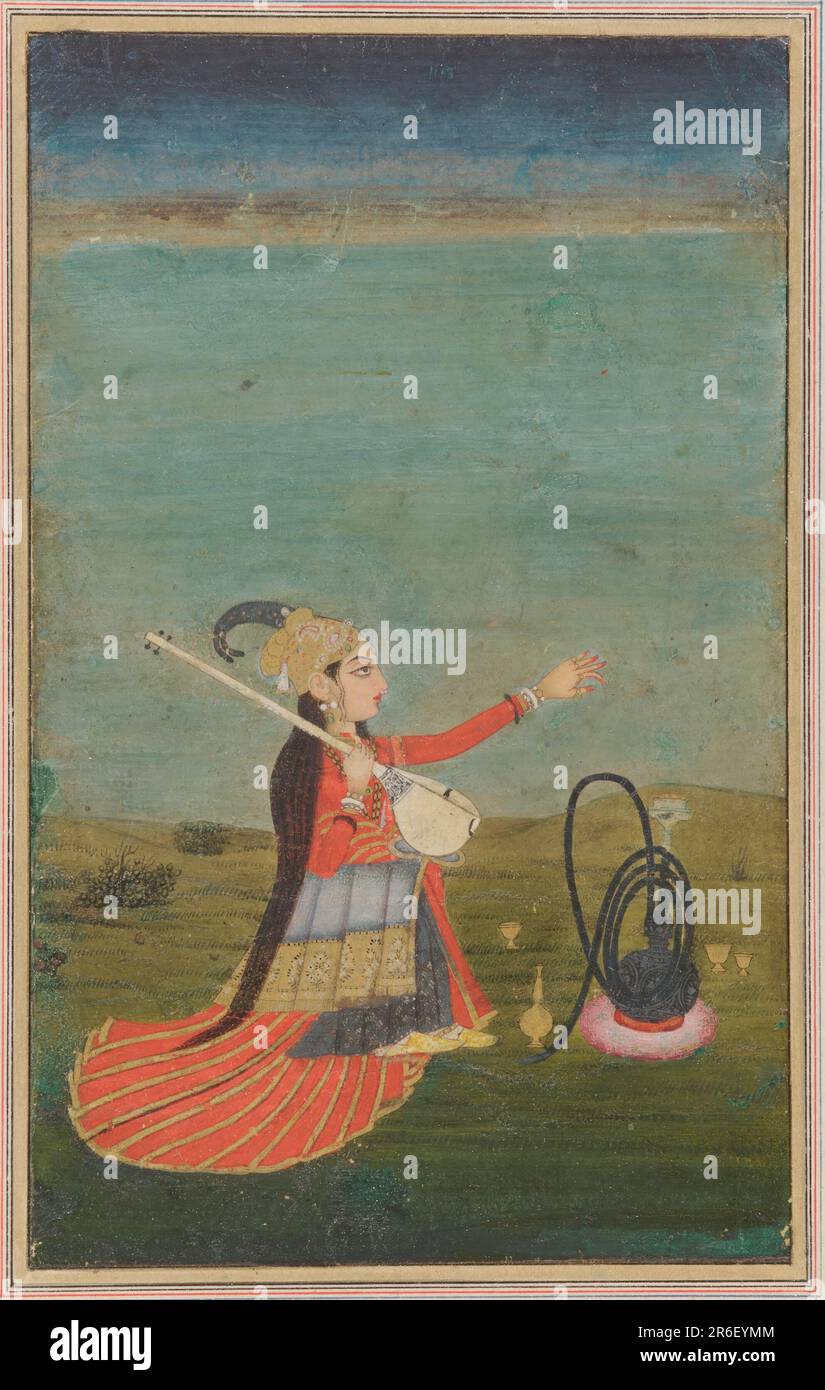 Female performer with tanpura. Date: 18th century. Origin: India. Period: Mughal dynasty. Color and gold on paper. Museum: Freer Gallery of Art and Arthur M. Sackler Gallery. Stock Photohttps://www.alamy.com/image-license-details/?v=1https://www.alamy.com/female-performer-with-tanpura-date-18th-century-origin-india-period-mughal-dynasty-color-and-gold-on-paper-museum-freer-gallery-of-art-and-arthur-m-sackler-gallery-image554748788.html
Female performer with tanpura. Date: 18th century. Origin: India. Period: Mughal dynasty. Color and gold on paper. Museum: Freer Gallery of Art and Arthur M. Sackler Gallery. Stock Photohttps://www.alamy.com/image-license-details/?v=1https://www.alamy.com/female-performer-with-tanpura-date-18th-century-origin-india-period-mughal-dynasty-color-and-gold-on-paper-museum-freer-gallery-of-art-and-arthur-m-sackler-gallery-image554748788.htmlRM2R6EYMM–Female performer with tanpura. Date: 18th century. Origin: India. Period: Mughal dynasty. Color and gold on paper. Museum: Freer Gallery of Art and Arthur M. Sackler Gallery.
 Mourning Pin for ER, late 18th - early 19th century. Stock Photohttps://www.alamy.com/image-license-details/?v=1https://www.alamy.com/mourning-pin-for-er-late-18th-early-19th-century-image418815361.html
Mourning Pin for ER, late 18th - early 19th century. Stock Photohttps://www.alamy.com/image-license-details/?v=1https://www.alamy.com/mourning-pin-for-er-late-18th-early-19th-century-image418815361.htmlRM2F9AK7D–Mourning Pin for ER, late 18th - early 19th century.
 Yang Kuei-fei. Origin: Japan. Period: Edo period. Date: late 18th-19th century. Color and gold on silk. Museum: Freer Gallery of Art and Arthur M. Sackler Gallery. Stock Photohttps://www.alamy.com/image-license-details/?v=1https://www.alamy.com/yang-kuei-fei-origin-japan-period-edo-period-date-late-18th-19th-century-color-and-gold-on-silk-museum-freer-gallery-of-art-and-arthur-m-sackler-gallery-image554746819.html
Yang Kuei-fei. Origin: Japan. Period: Edo period. Date: late 18th-19th century. Color and gold on silk. Museum: Freer Gallery of Art and Arthur M. Sackler Gallery. Stock Photohttps://www.alamy.com/image-license-details/?v=1https://www.alamy.com/yang-kuei-fei-origin-japan-period-edo-period-date-late-18th-19th-century-color-and-gold-on-silk-museum-freer-gallery-of-art-and-arthur-m-sackler-gallery-image554746819.htmlRM2R6EW6B–Yang Kuei-fei. Origin: Japan. Period: Edo period. Date: late 18th-19th century. Color and gold on silk. Museum: Freer Gallery of Art and Arthur M. Sackler Gallery.
 Standing figure of a woman, 18th century. Stock Photohttps://www.alamy.com/image-license-details/?v=1https://www.alamy.com/standing-figure-of-a-woman-18th-century-image426151139.html
Standing figure of a woman, 18th century. Stock Photohttps://www.alamy.com/image-license-details/?v=1https://www.alamy.com/standing-figure-of-a-woman-18th-century-image426151139.htmlRM2FN8T3F–Standing figure of a woman, 18th century.
 Dancer and Musicians in a Garden. Date: 18th century. Origin: China. Period: Qing dynasty. Ink and color on silk. Museum: Freer Gallery of Art and Arthur M. Sackler Gallery. Stock Photohttps://www.alamy.com/image-license-details/?v=1https://www.alamy.com/dancer-and-musicians-in-a-garden-date-18th-century-origin-china-period-qing-dynasty-ink-and-color-on-silk-museum-freer-gallery-of-art-and-arthur-m-sackler-gallery-image554751130.html
Dancer and Musicians in a Garden. Date: 18th century. Origin: China. Period: Qing dynasty. Ink and color on silk. Museum: Freer Gallery of Art and Arthur M. Sackler Gallery. Stock Photohttps://www.alamy.com/image-license-details/?v=1https://www.alamy.com/dancer-and-musicians-in-a-garden-date-18th-century-origin-china-period-qing-dynasty-ink-and-color-on-silk-museum-freer-gallery-of-art-and-arthur-m-sackler-gallery-image554751130.htmlRM2R6F2MA–Dancer and Musicians in a Garden. Date: 18th century. Origin: China. Period: Qing dynasty. Ink and color on silk. Museum: Freer Gallery of Art and Arthur M. Sackler Gallery.
 Yujo on parade, late 18th century. Stock Photohttps://www.alamy.com/image-license-details/?v=1https://www.alamy.com/yujo-on-parade-late-18th-century-image426151783.html
Yujo on parade, late 18th century. Stock Photohttps://www.alamy.com/image-license-details/?v=1https://www.alamy.com/yujo-on-parade-late-18th-century-image426151783.htmlRM2FN8TXF–Yujo on parade, late 18th century.
 Shamisen Player. Date: late 18th-early 19th century. Origin: Japan. Period: Edo period. Color, ink, and gold on silk panel. Museum: Freer Gallery of Art and Arthur M. Sackler Gallery. Stock Photohttps://www.alamy.com/image-license-details/?v=1https://www.alamy.com/shamisen-player-date-late-18th-early-19th-century-origin-japan-period-edo-period-color-ink-and-gold-on-silk-panel-museum-freer-gallery-of-art-and-arthur-m-sackler-gallery-image554743457.html
Shamisen Player. Date: late 18th-early 19th century. Origin: Japan. Period: Edo period. Color, ink, and gold on silk panel. Museum: Freer Gallery of Art and Arthur M. Sackler Gallery. Stock Photohttps://www.alamy.com/image-license-details/?v=1https://www.alamy.com/shamisen-player-date-late-18th-early-19th-century-origin-japan-period-edo-period-color-ink-and-gold-on-silk-panel-museum-freer-gallery-of-art-and-arthur-m-sackler-gallery-image554743457.htmlRM2R6EMX9–Shamisen Player. Date: late 18th-early 19th century. Origin: Japan. Period: Edo period. Color, ink, and gold on silk panel. Museum: Freer Gallery of Art and Arthur M. Sackler Gallery.
 A princess and a child, 18th century. Stock Photohttps://www.alamy.com/image-license-details/?v=1https://www.alamy.com/a-princess-and-a-child-18th-century-image426152032.html
A princess and a child, 18th century. Stock Photohttps://www.alamy.com/image-license-details/?v=1https://www.alamy.com/a-princess-and-a-child-18th-century-image426152032.htmlRM2FN8W7C–A princess and a child, 18th century.
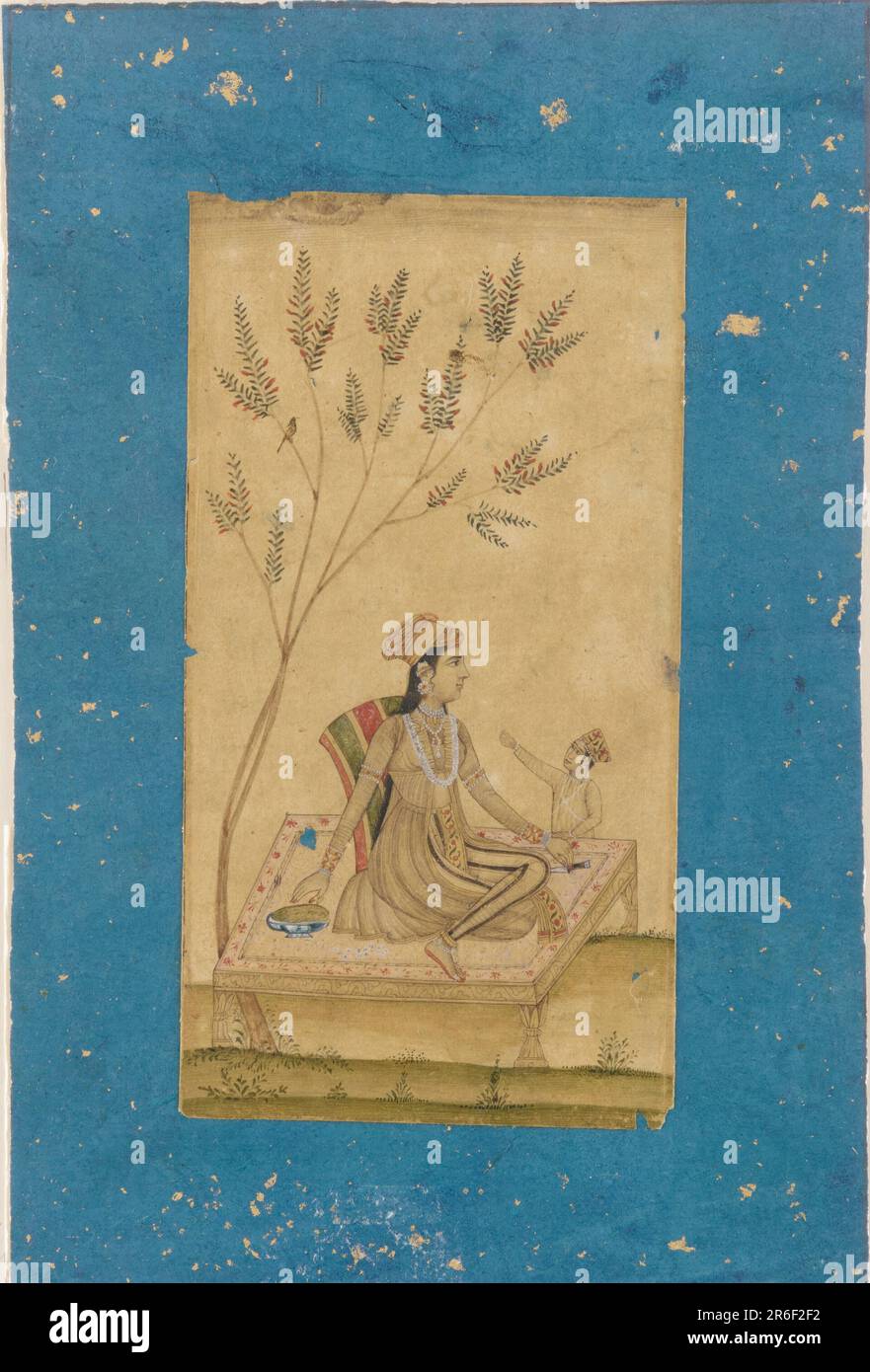 A princess and a child. Date: 18th century. Origin: India. Period: Mughal dynasty. Color and gold on paper. Museum: Freer Gallery of Art and Arthur M. Sackler Gallery. Stock Photohttps://www.alamy.com/image-license-details/?v=1https://www.alamy.com/a-princess-and-a-child-date-18th-century-origin-india-period-mughal-dynasty-color-and-gold-on-paper-museum-freer-gallery-of-art-and-arthur-m-sackler-gallery-image554750982.html
A princess and a child. Date: 18th century. Origin: India. Period: Mughal dynasty. Color and gold on paper. Museum: Freer Gallery of Art and Arthur M. Sackler Gallery. Stock Photohttps://www.alamy.com/image-license-details/?v=1https://www.alamy.com/a-princess-and-a-child-date-18th-century-origin-india-period-mughal-dynasty-color-and-gold-on-paper-museum-freer-gallery-of-art-and-arthur-m-sackler-gallery-image554750982.htmlRM2R6F2F2–A princess and a child. Date: 18th century. Origin: India. Period: Mughal dynasty. Color and gold on paper. Museum: Freer Gallery of Art and Arthur M. Sackler Gallery.
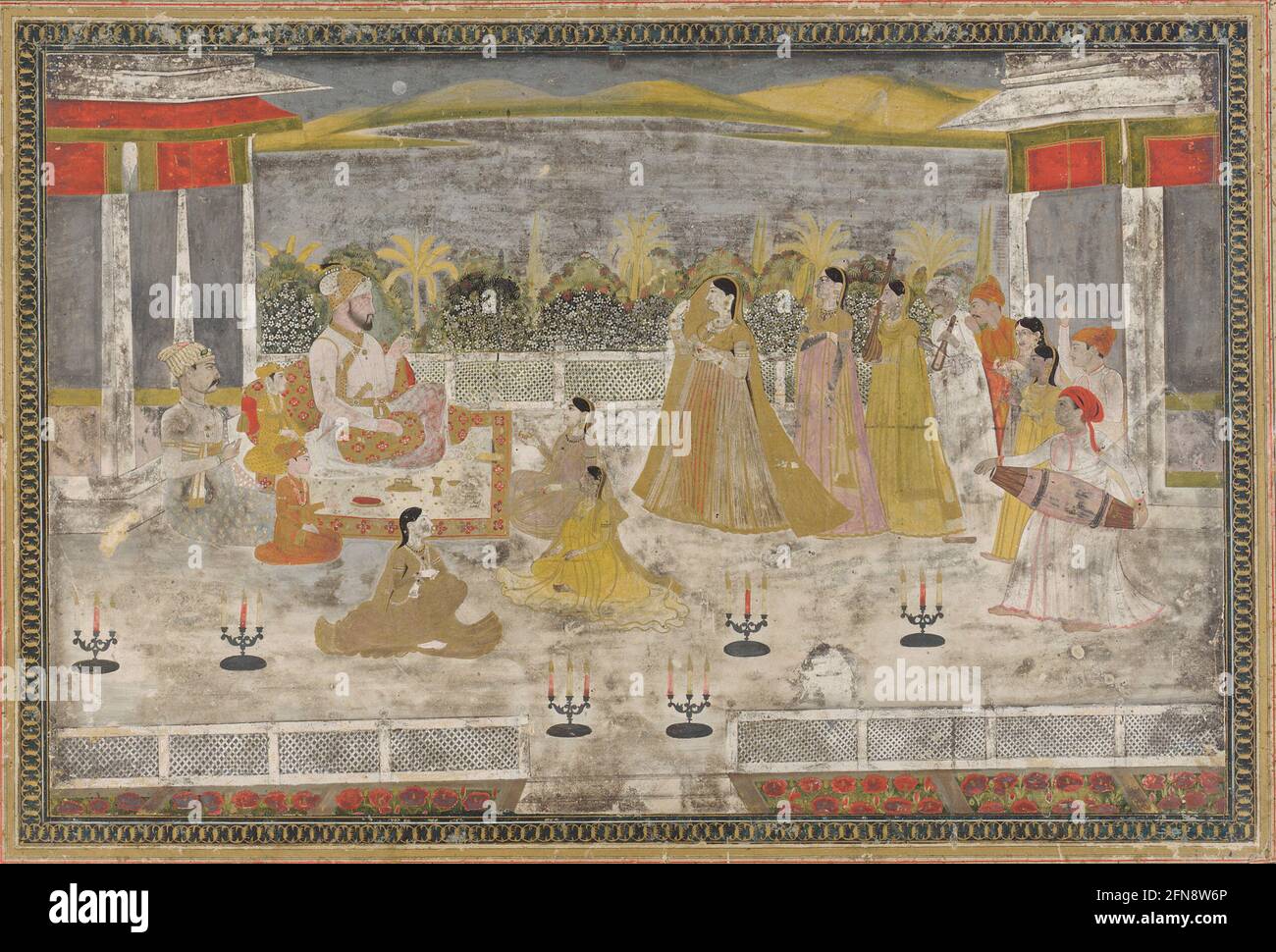 A Palace scene, 18th century. Stock Photohttps://www.alamy.com/image-license-details/?v=1https://www.alamy.com/a-palace-scene-18th-century-image426152014.html
A Palace scene, 18th century. Stock Photohttps://www.alamy.com/image-license-details/?v=1https://www.alamy.com/a-palace-scene-18th-century-image426152014.htmlRM2FN8W6P–A Palace scene, 18th century.
 Utai no Shisho. Date: late 18th-early 19th century. Origin: Japan. Period: Edo period. Color and slight gold on silk. Museum: Freer Gallery of Art and Arthur M. Sackler Gallery. Stock Photohttps://www.alamy.com/image-license-details/?v=1https://www.alamy.com/utai-no-shisho-date-late-18th-early-19th-century-origin-japan-period-edo-period-color-and-slight-gold-on-silk-museum-freer-gallery-of-art-and-arthur-m-sackler-gallery-image554742949.html
Utai no Shisho. Date: late 18th-early 19th century. Origin: Japan. Period: Edo period. Color and slight gold on silk. Museum: Freer Gallery of Art and Arthur M. Sackler Gallery. Stock Photohttps://www.alamy.com/image-license-details/?v=1https://www.alamy.com/utai-no-shisho-date-late-18th-early-19th-century-origin-japan-period-edo-period-color-and-slight-gold-on-silk-museum-freer-gallery-of-art-and-arthur-m-sackler-gallery-image554742949.htmlRM2R6EM85–Utai no Shisho. Date: late 18th-early 19th century. Origin: Japan. Period: Edo period. Color and slight gold on silk. Museum: Freer Gallery of Art and Arthur M. Sackler Gallery.
